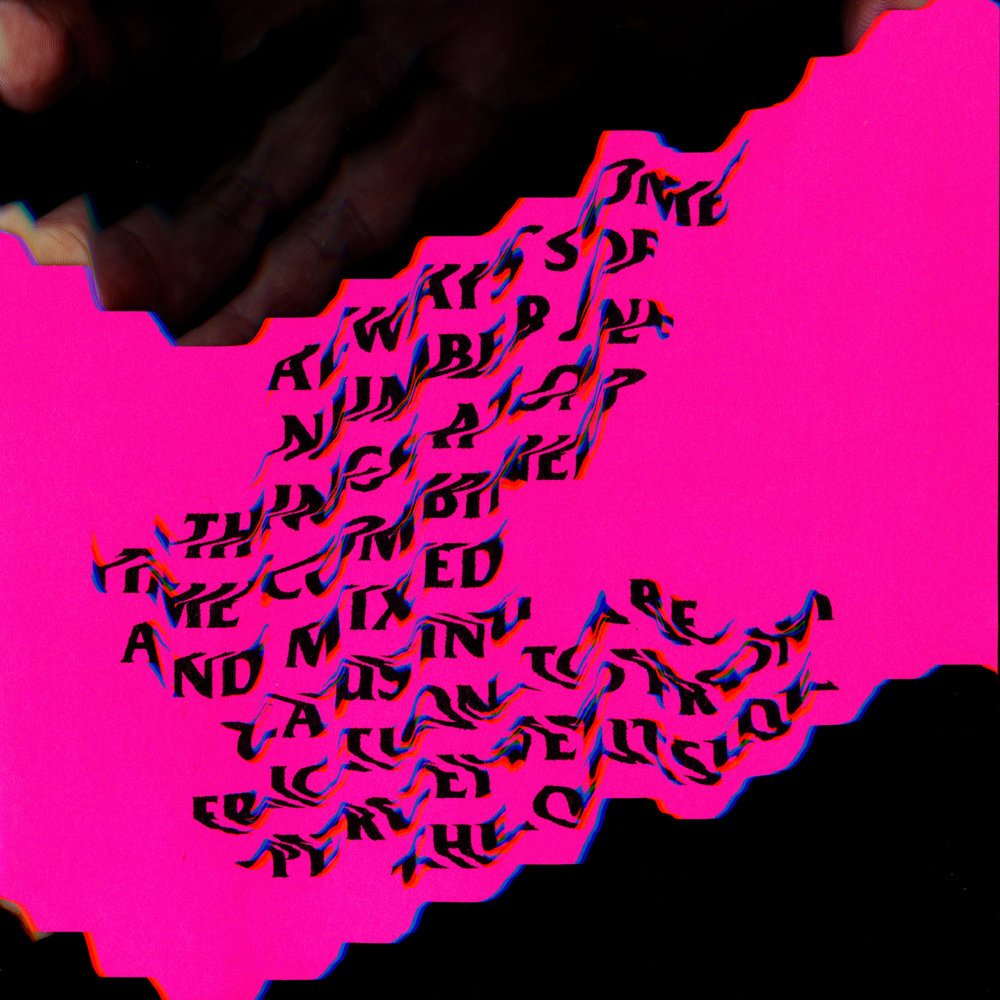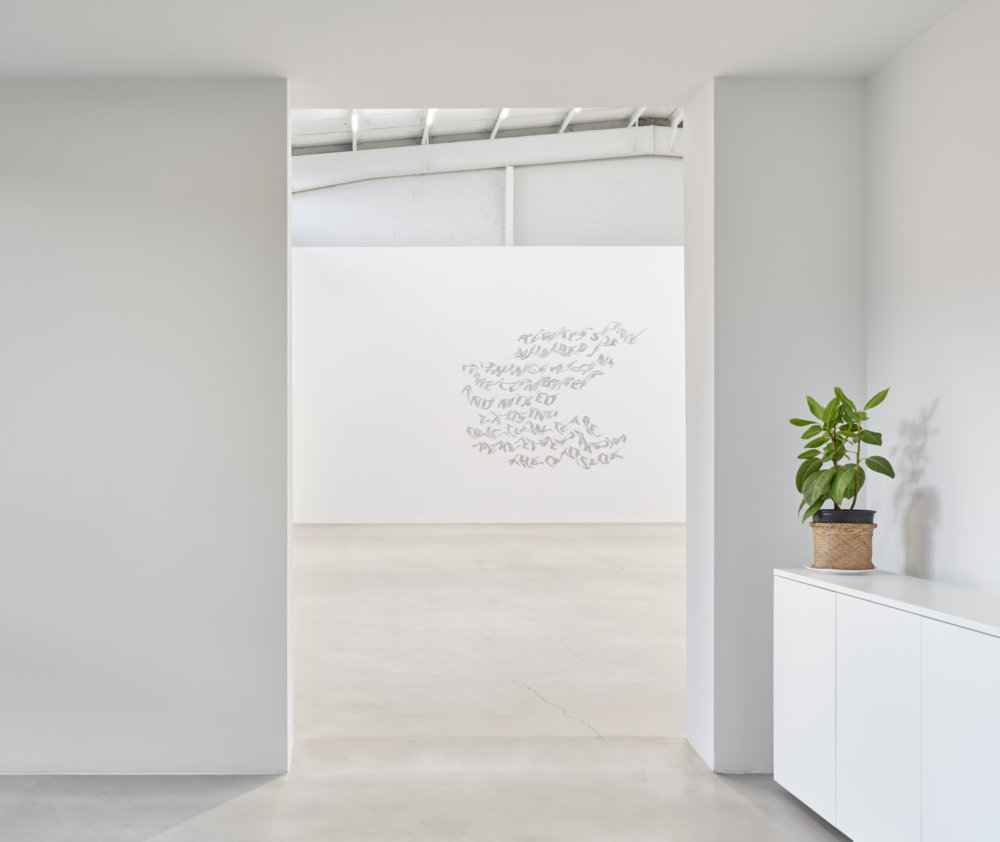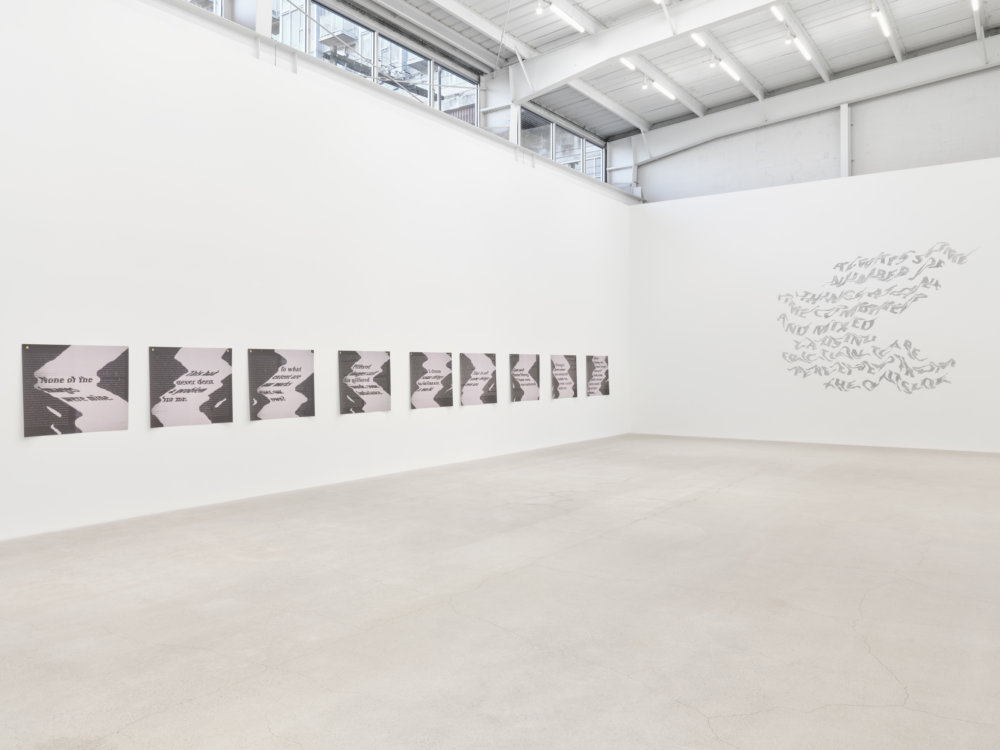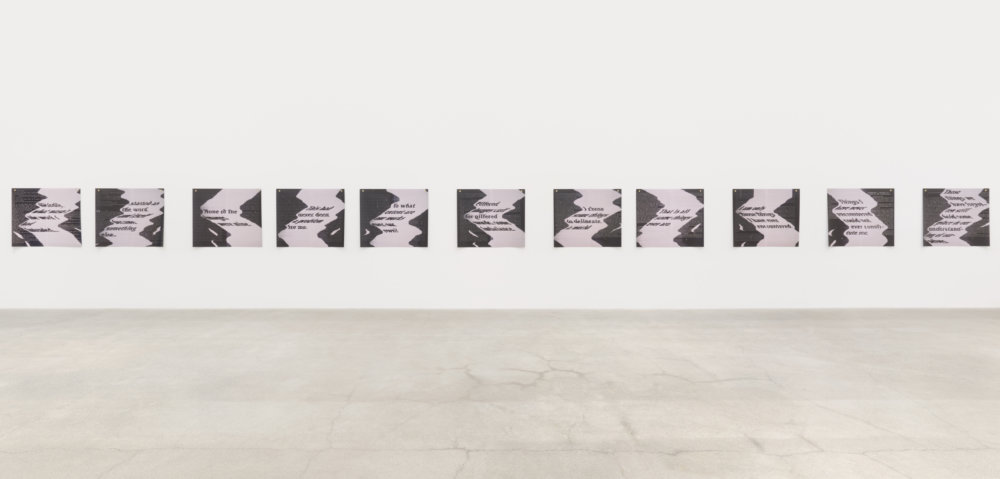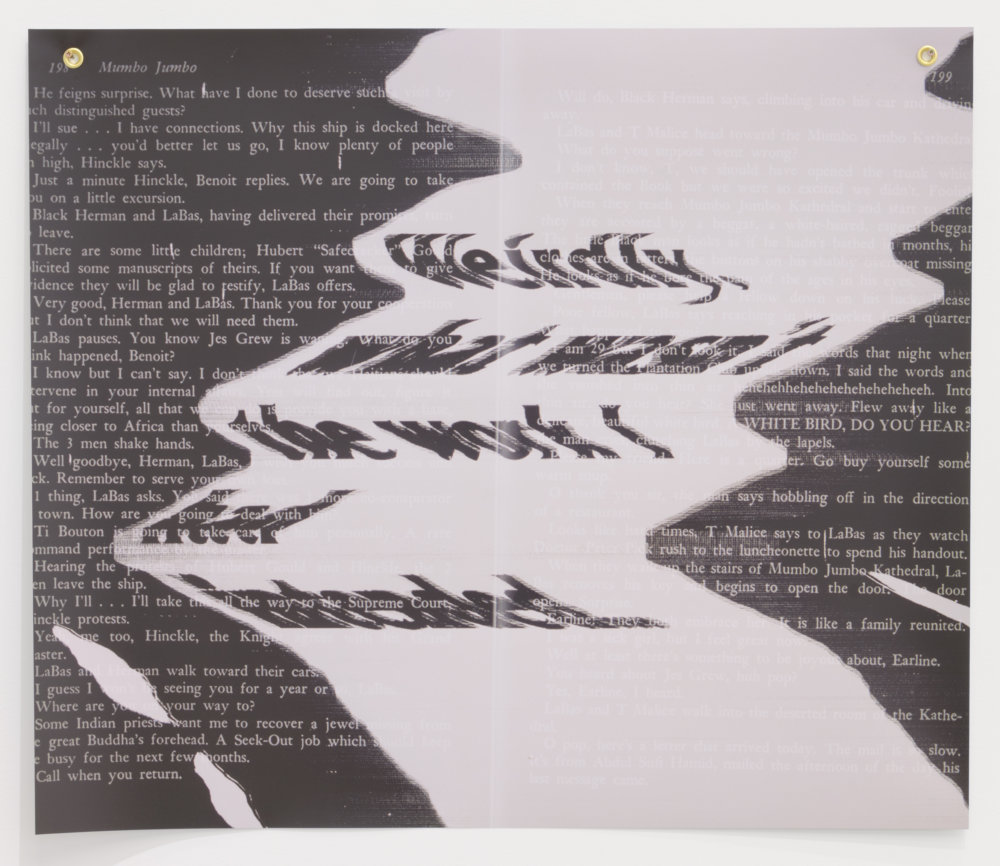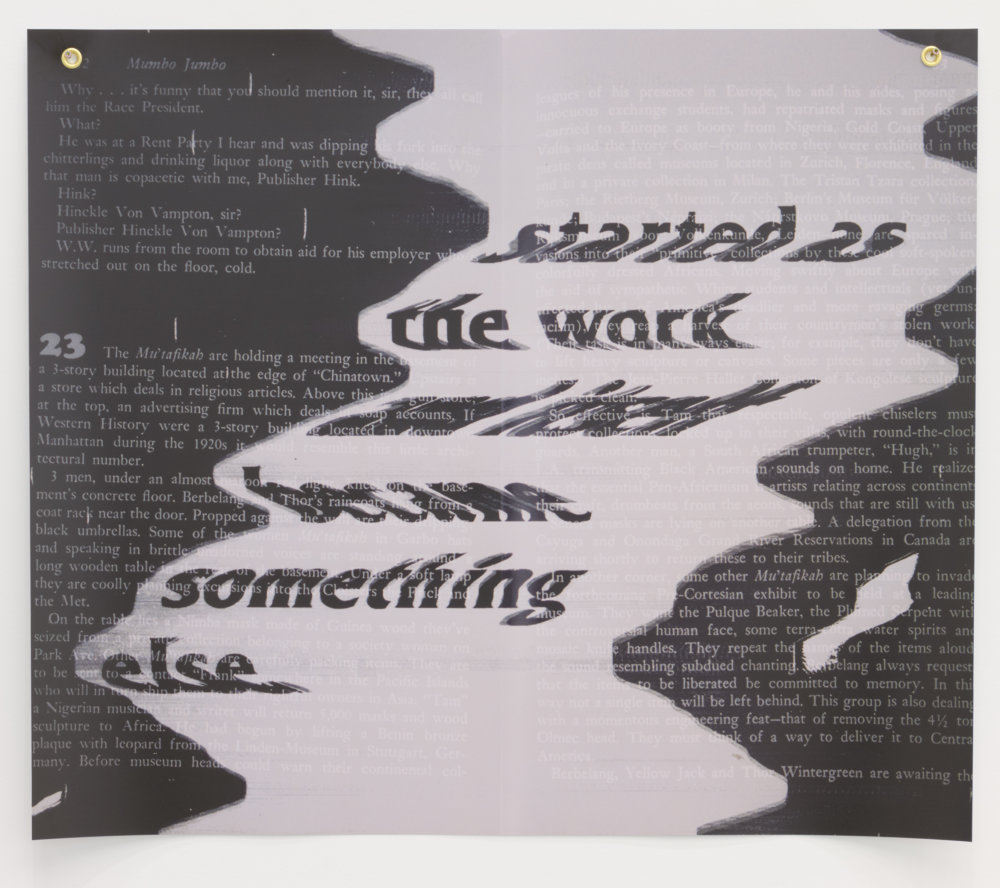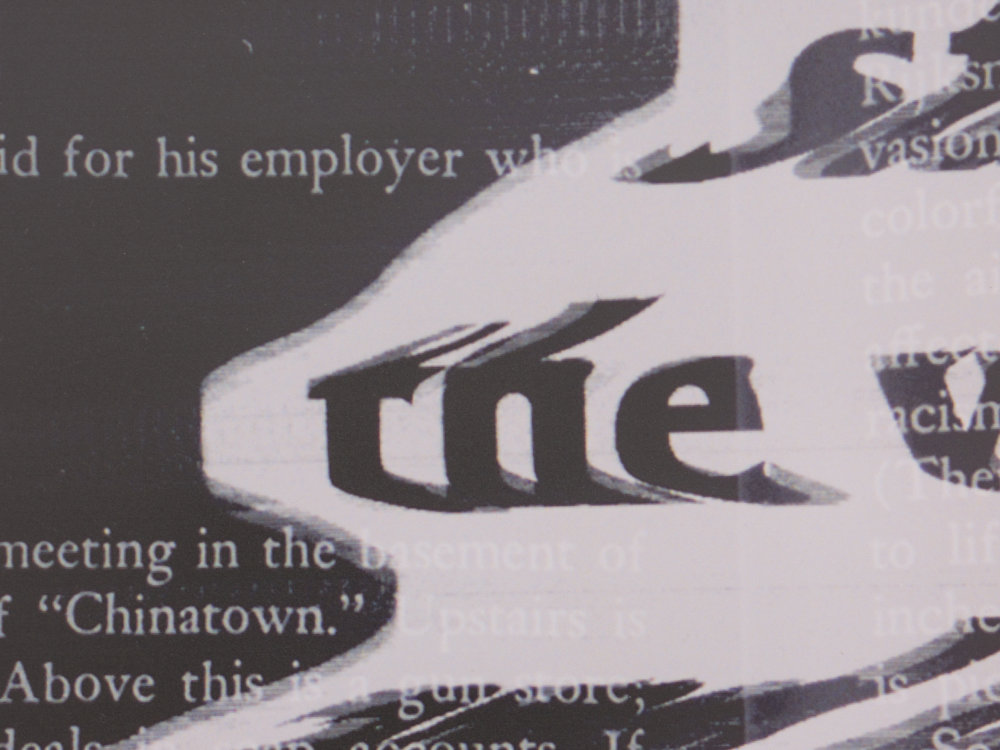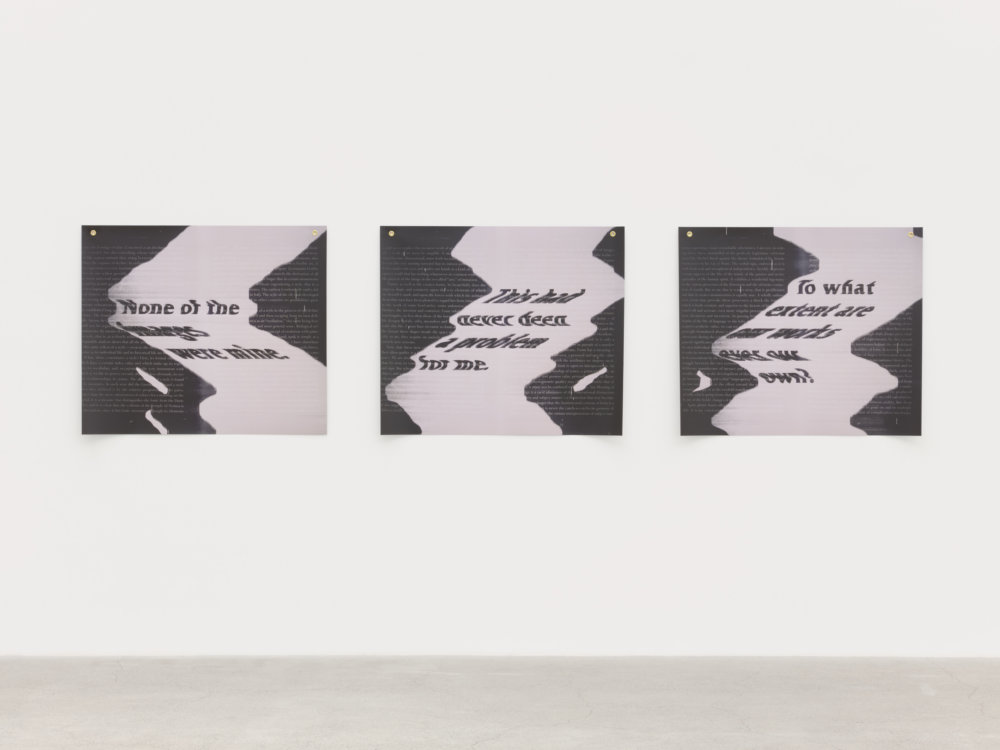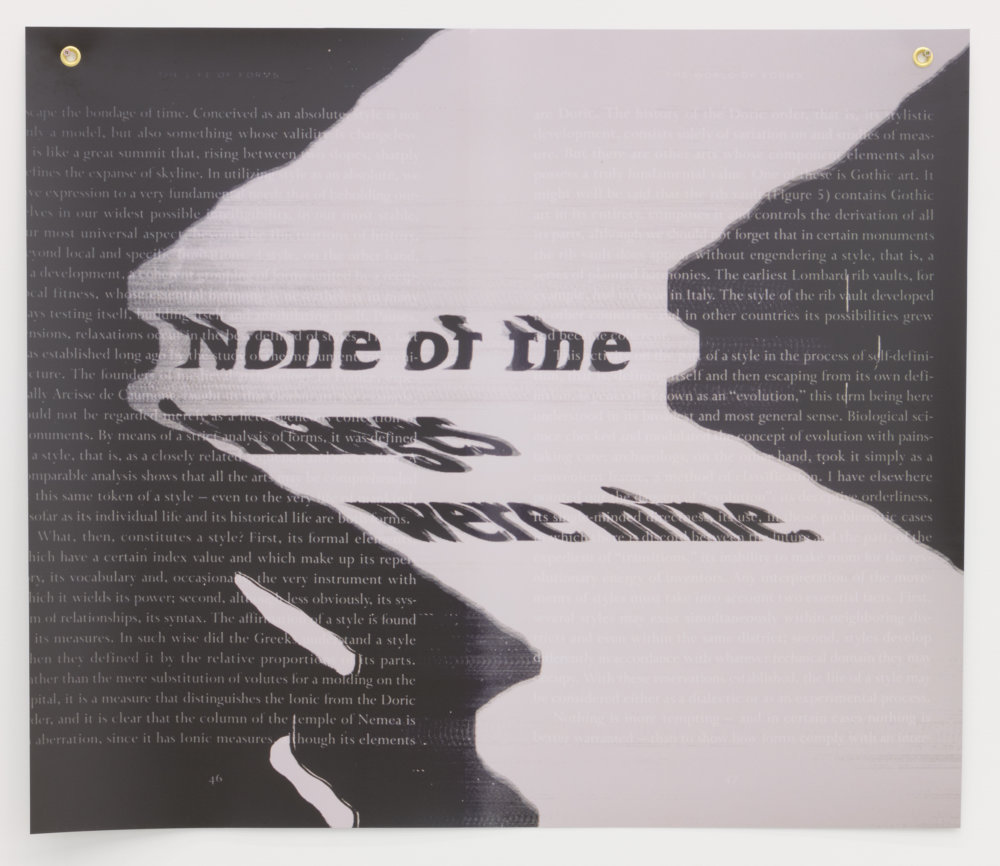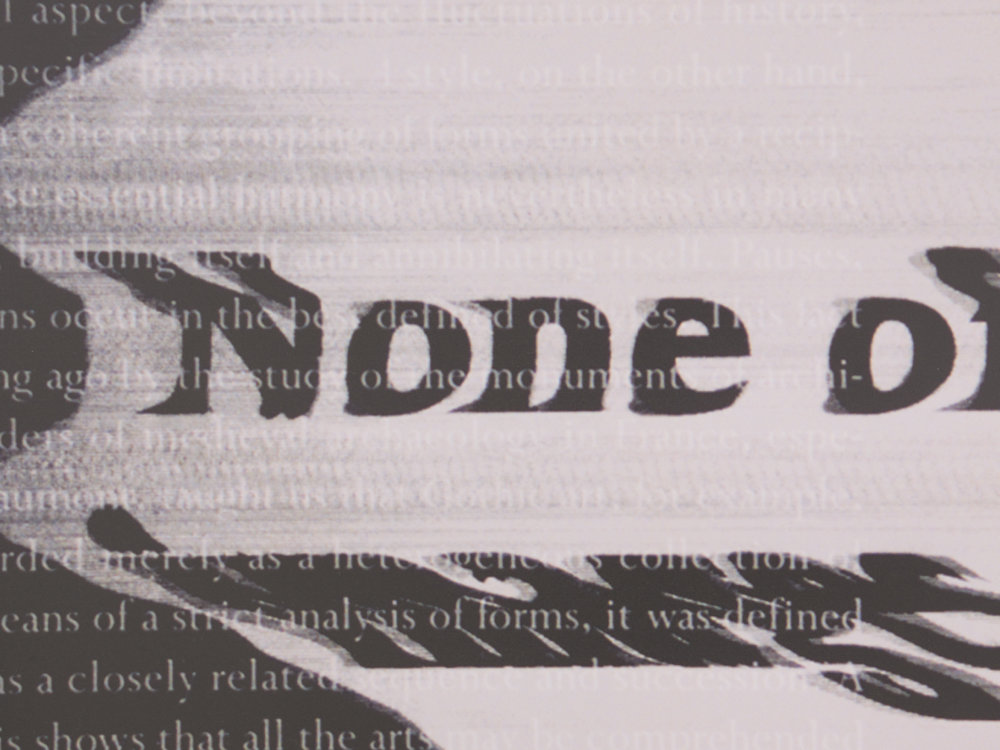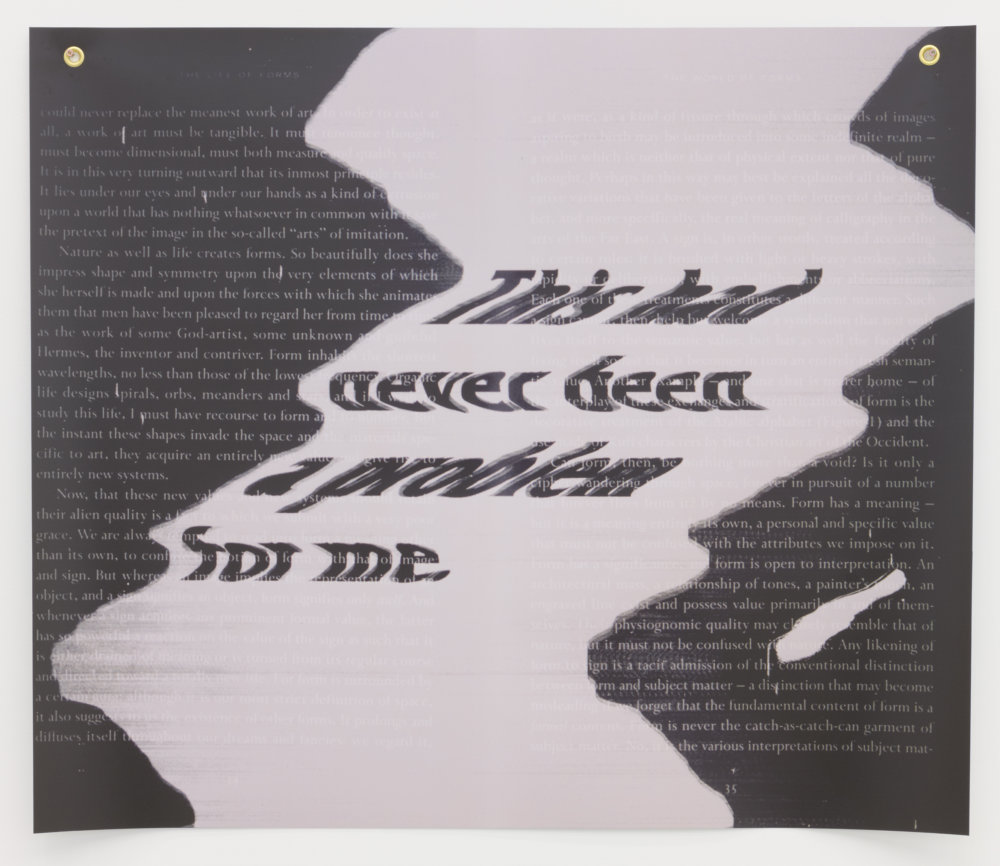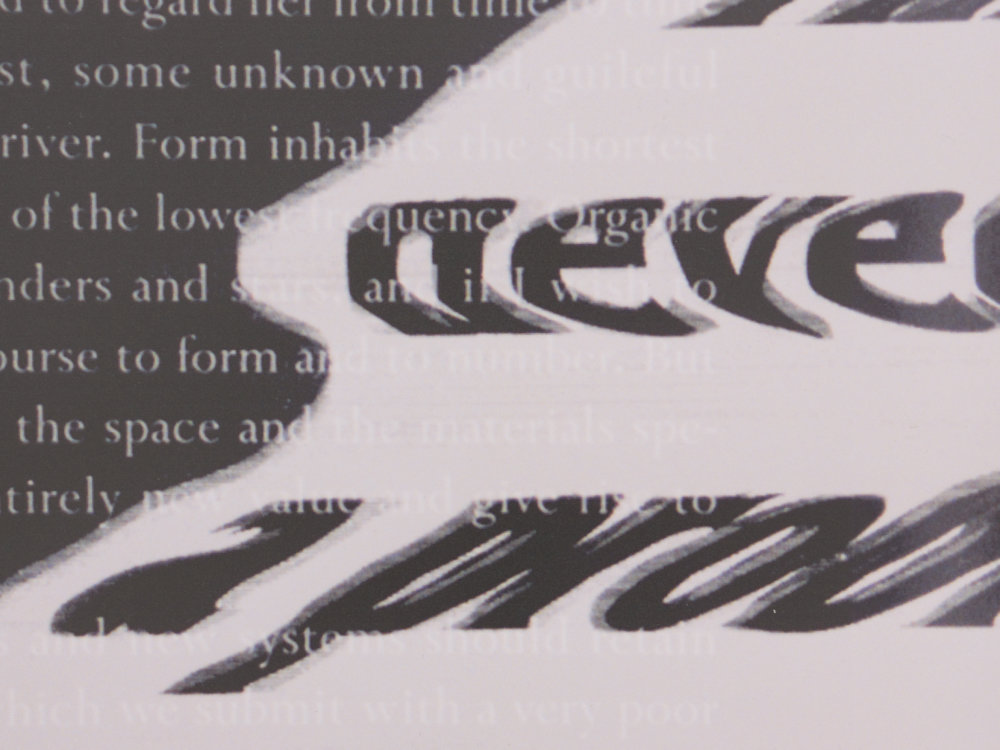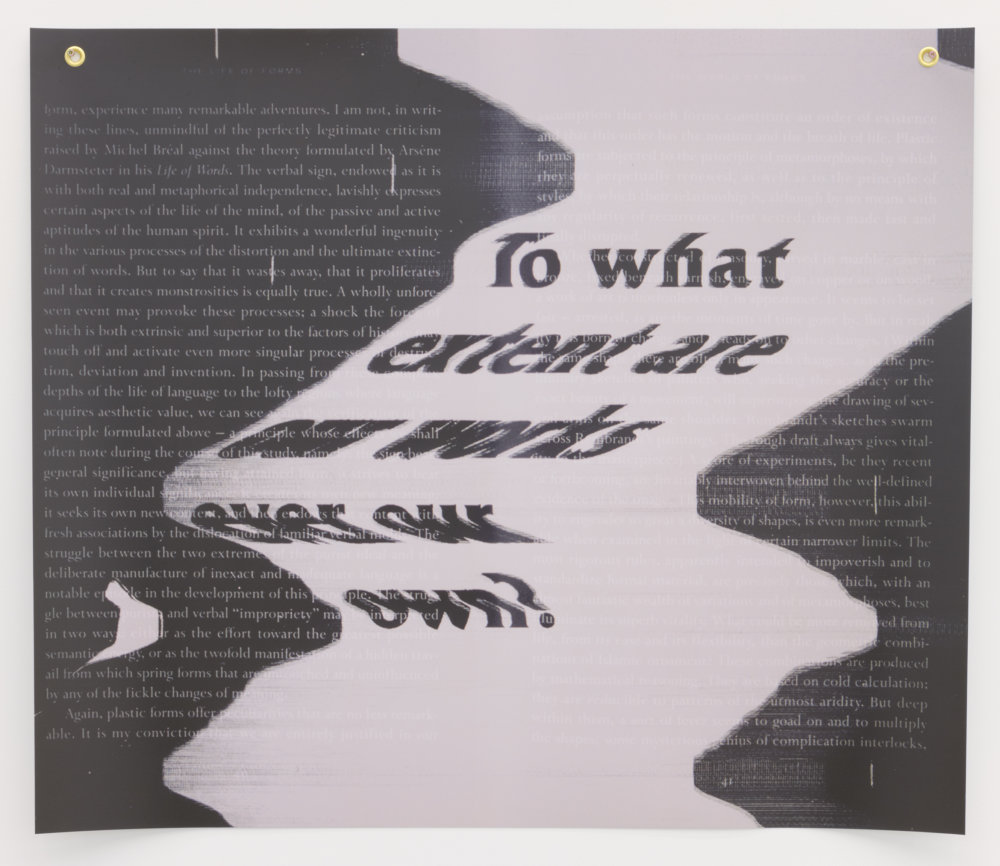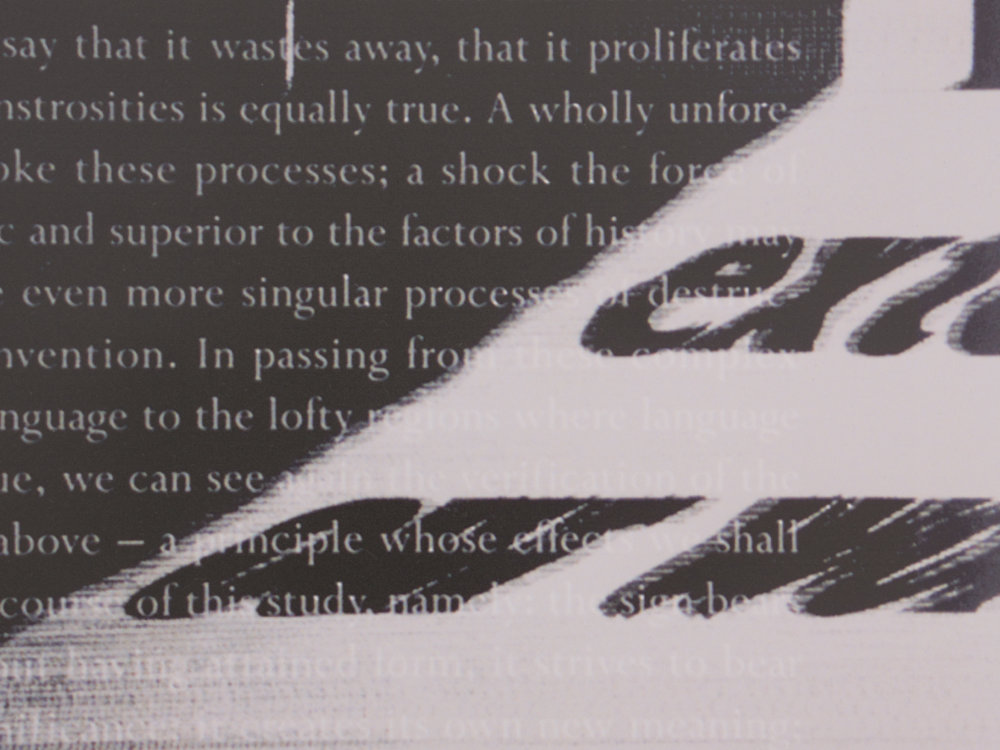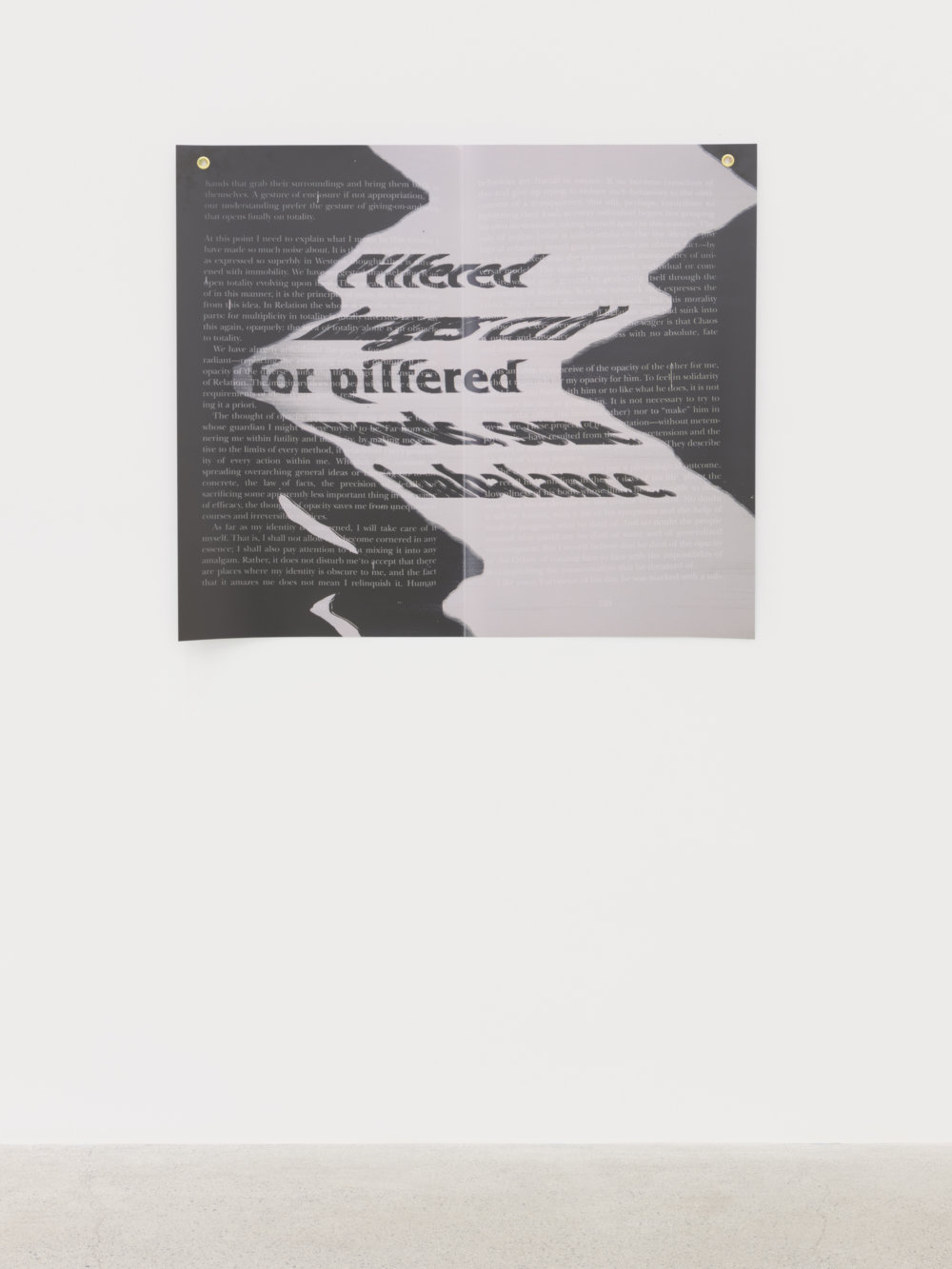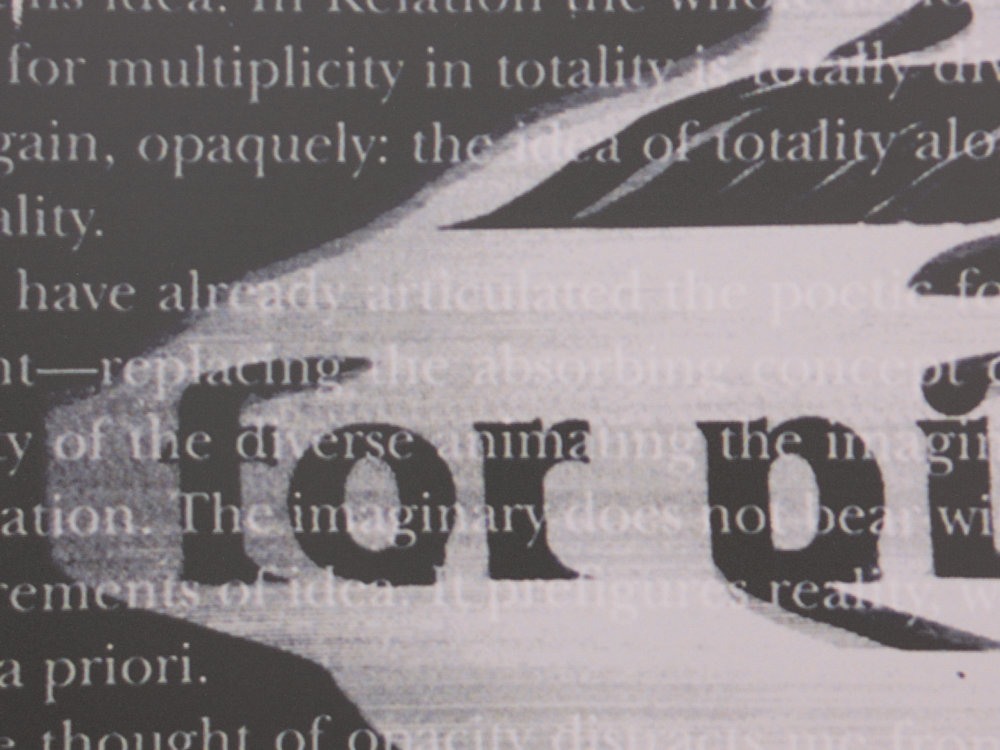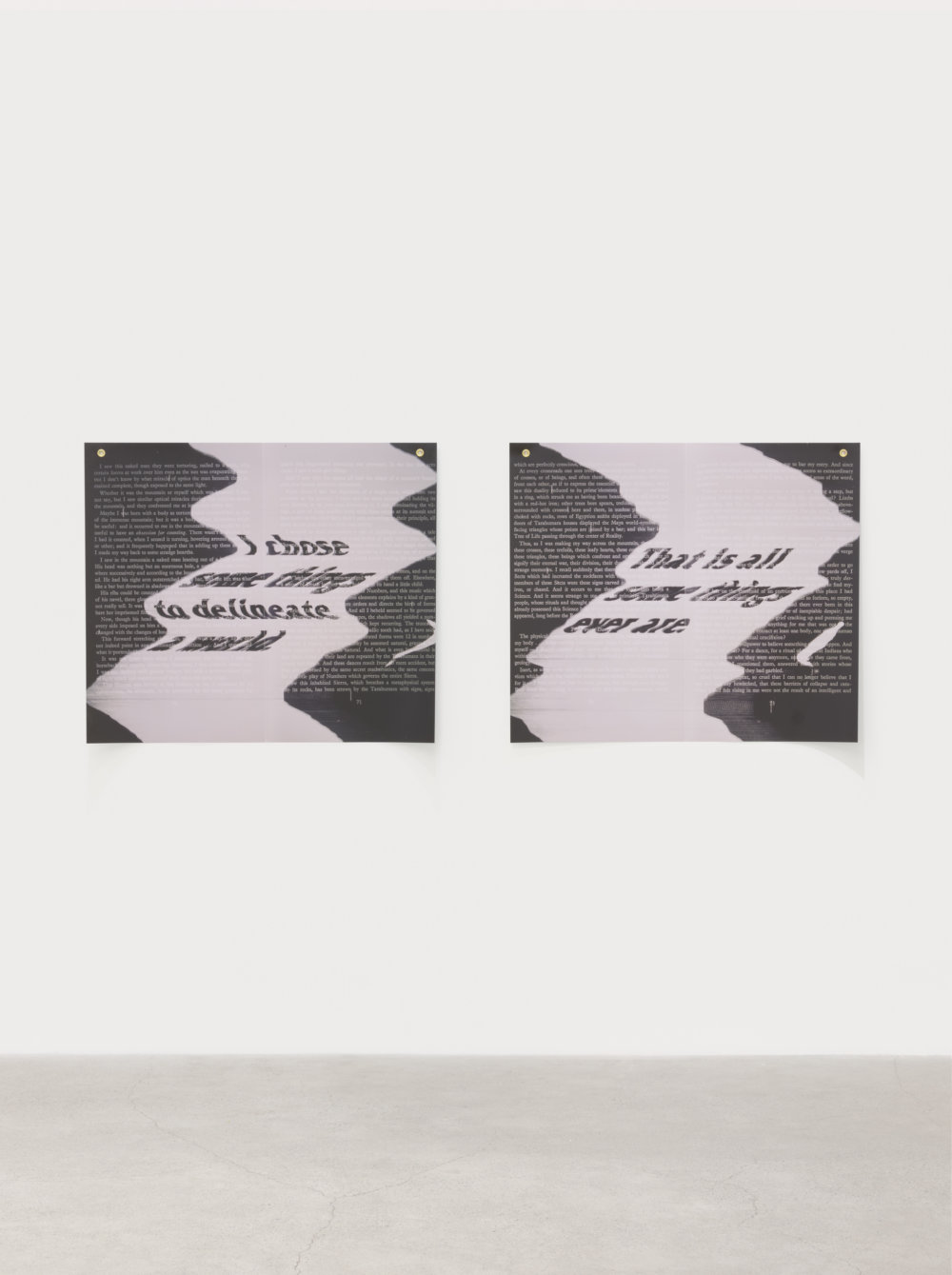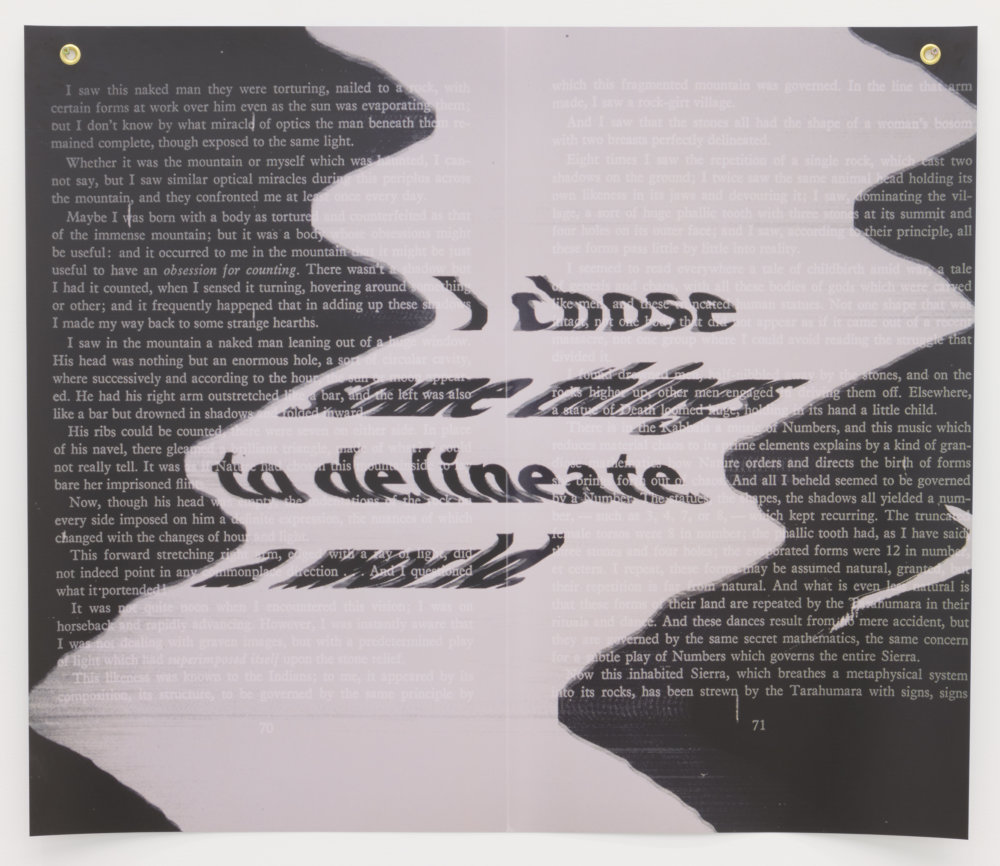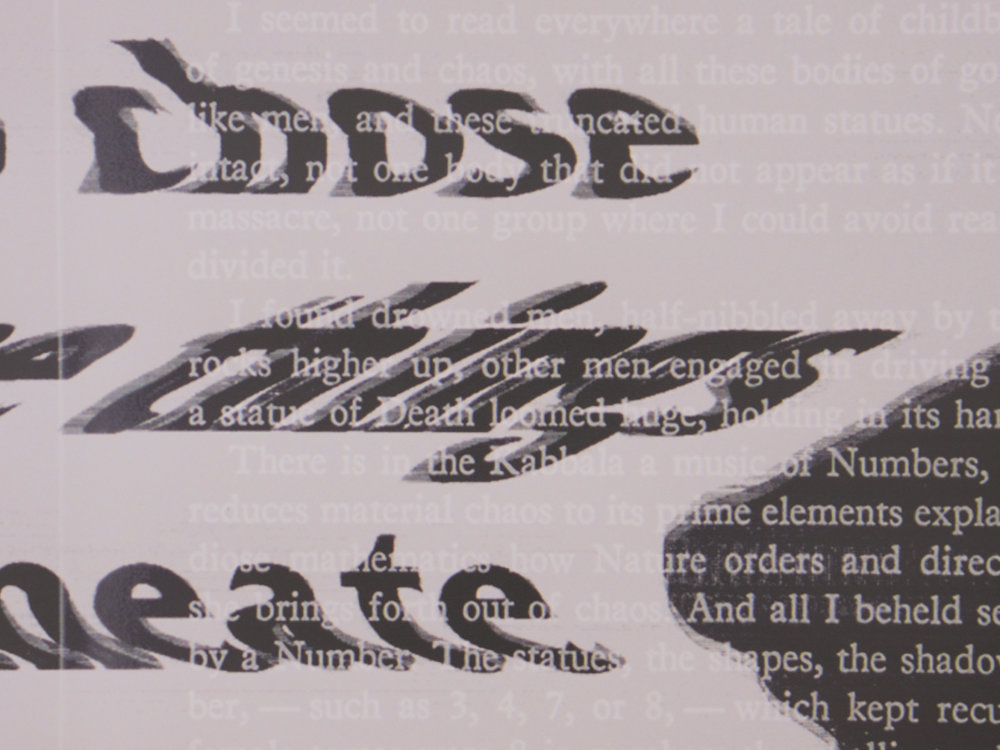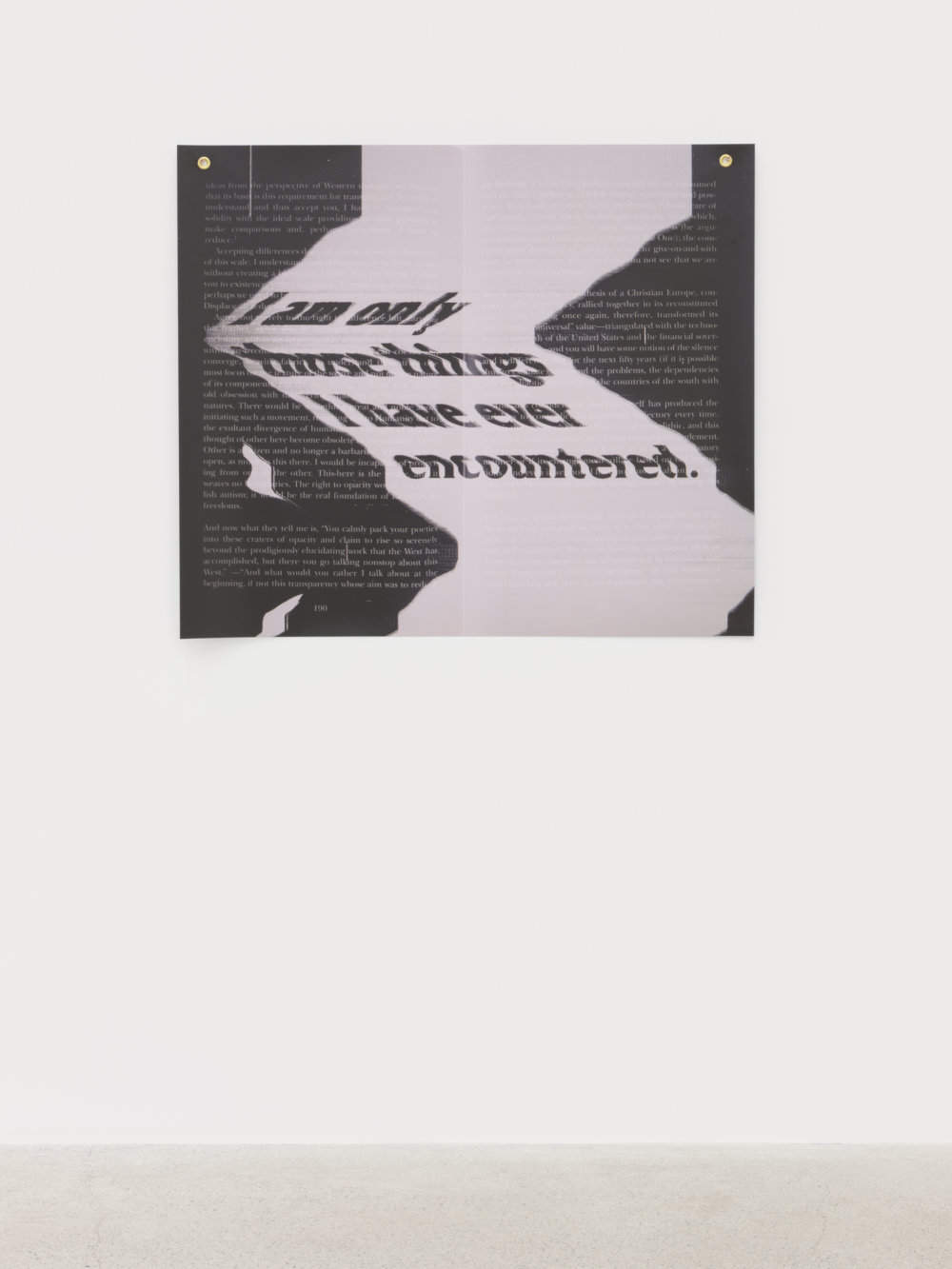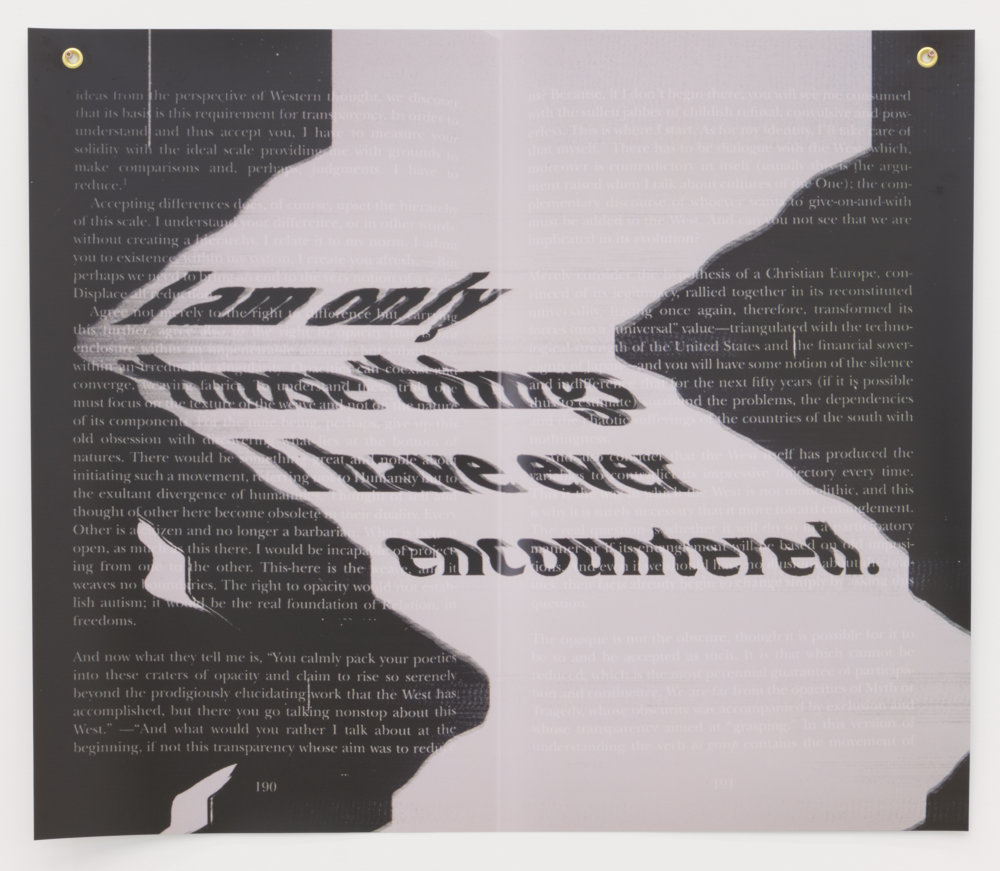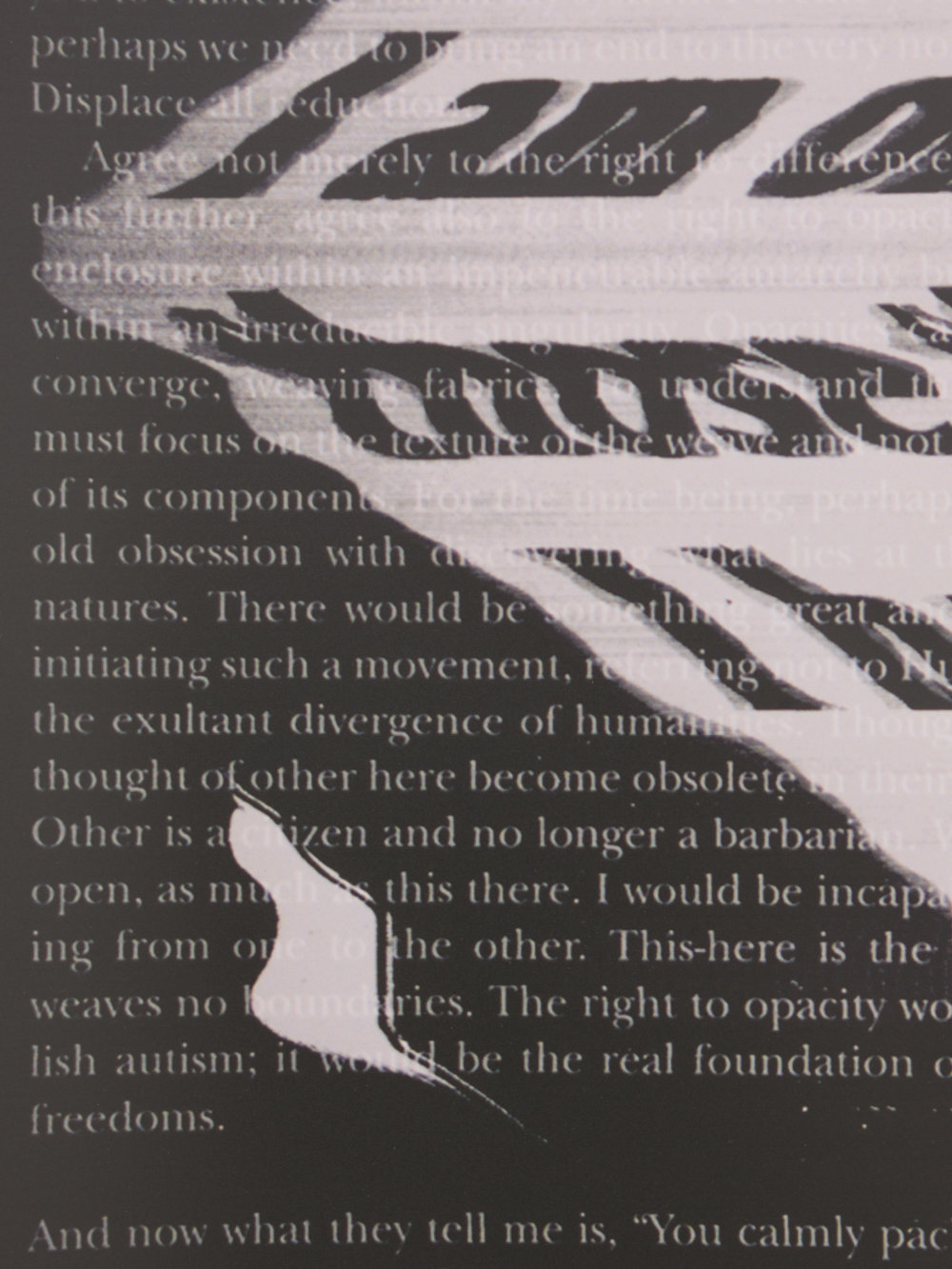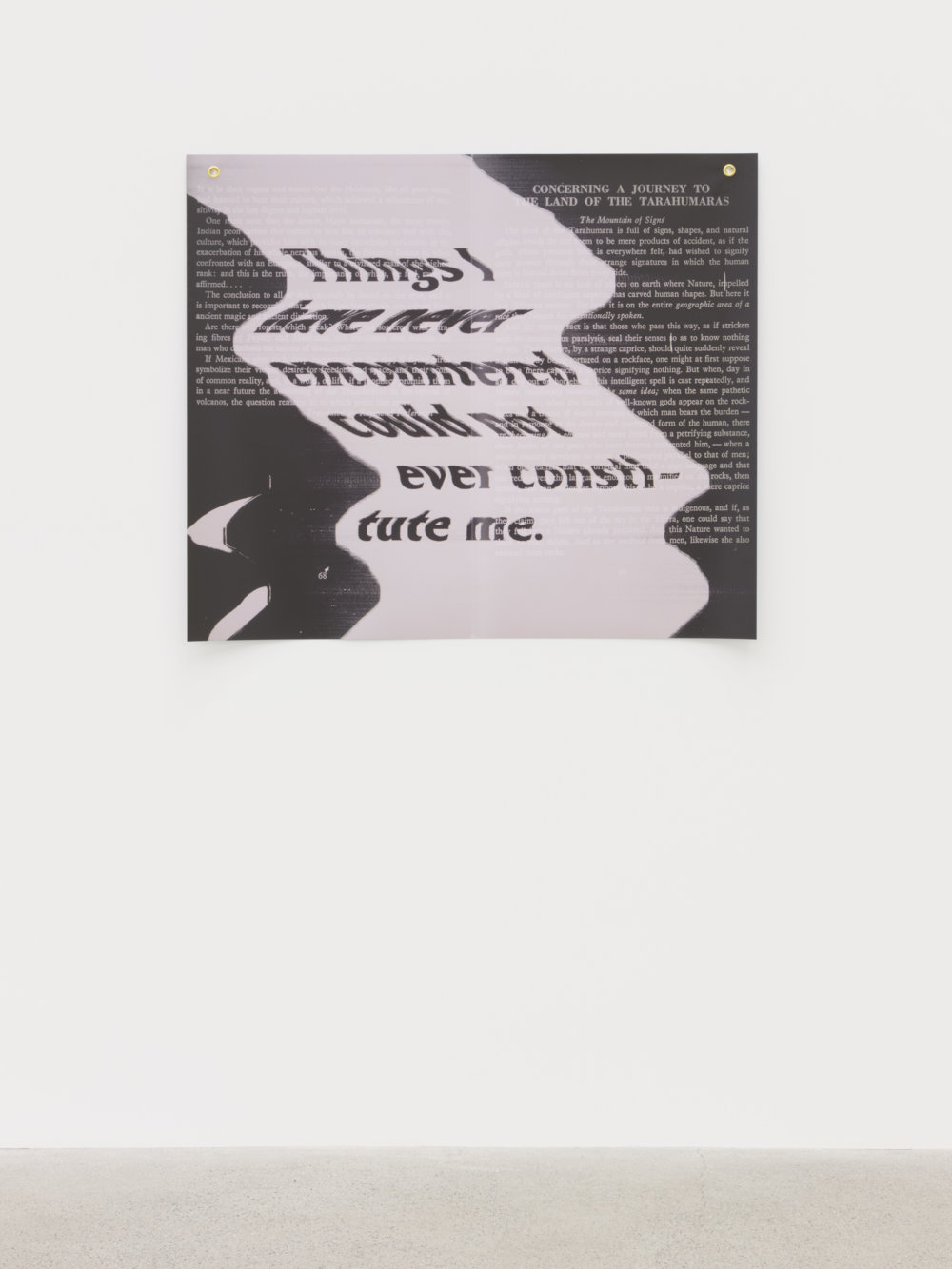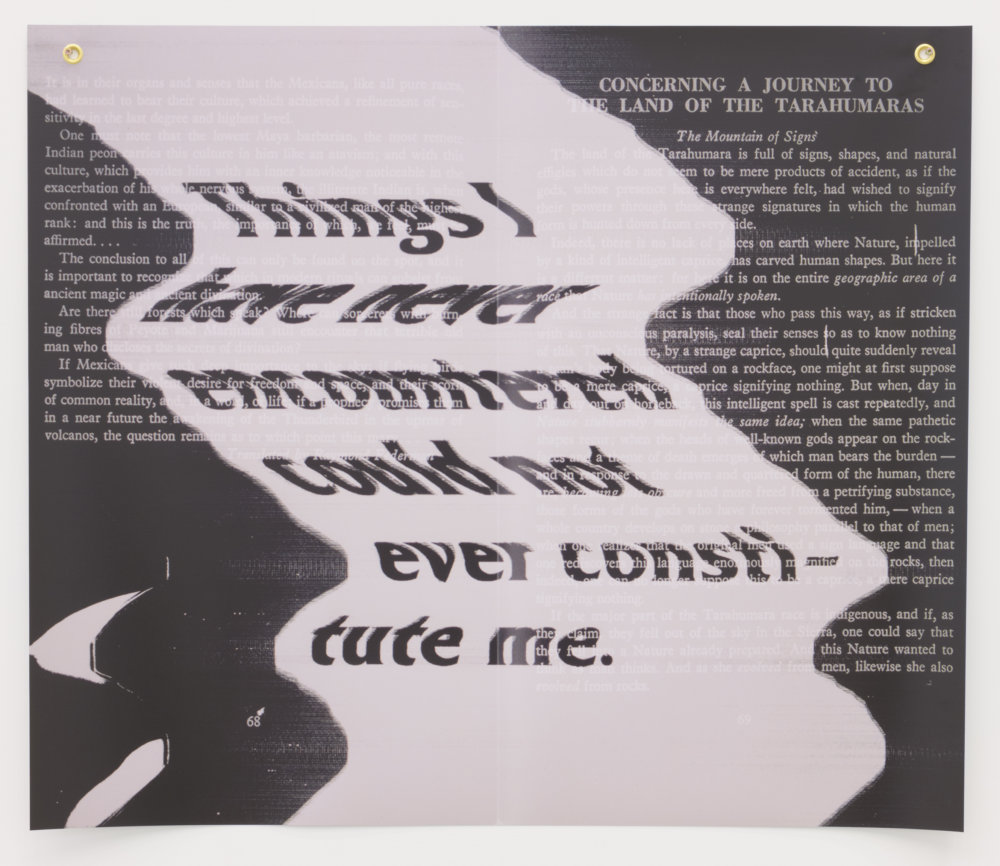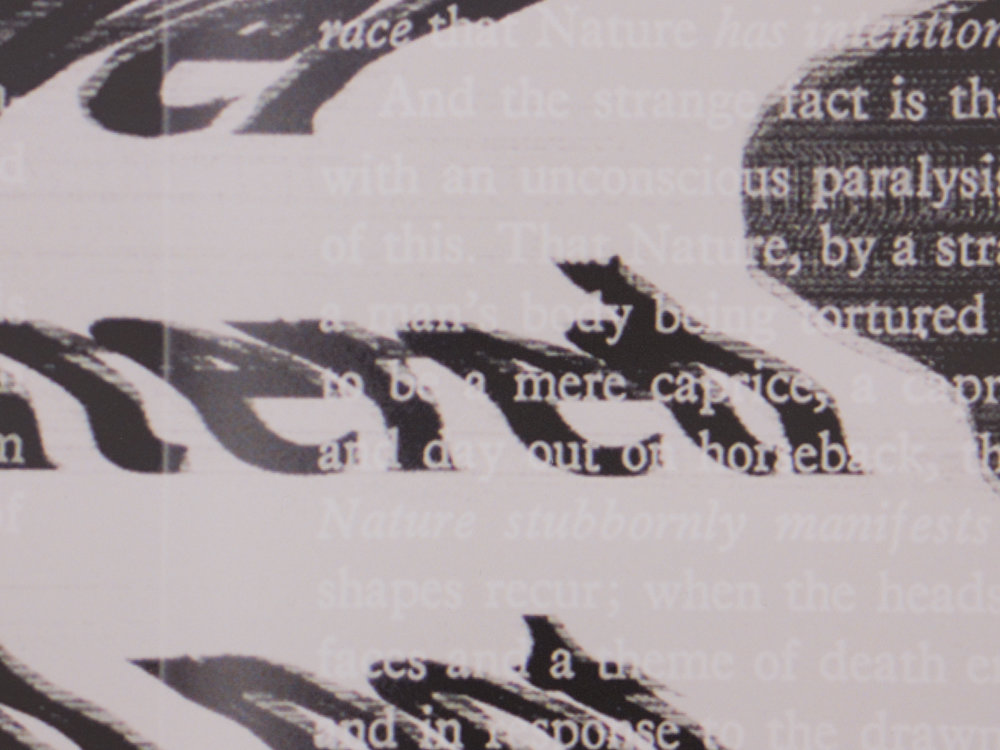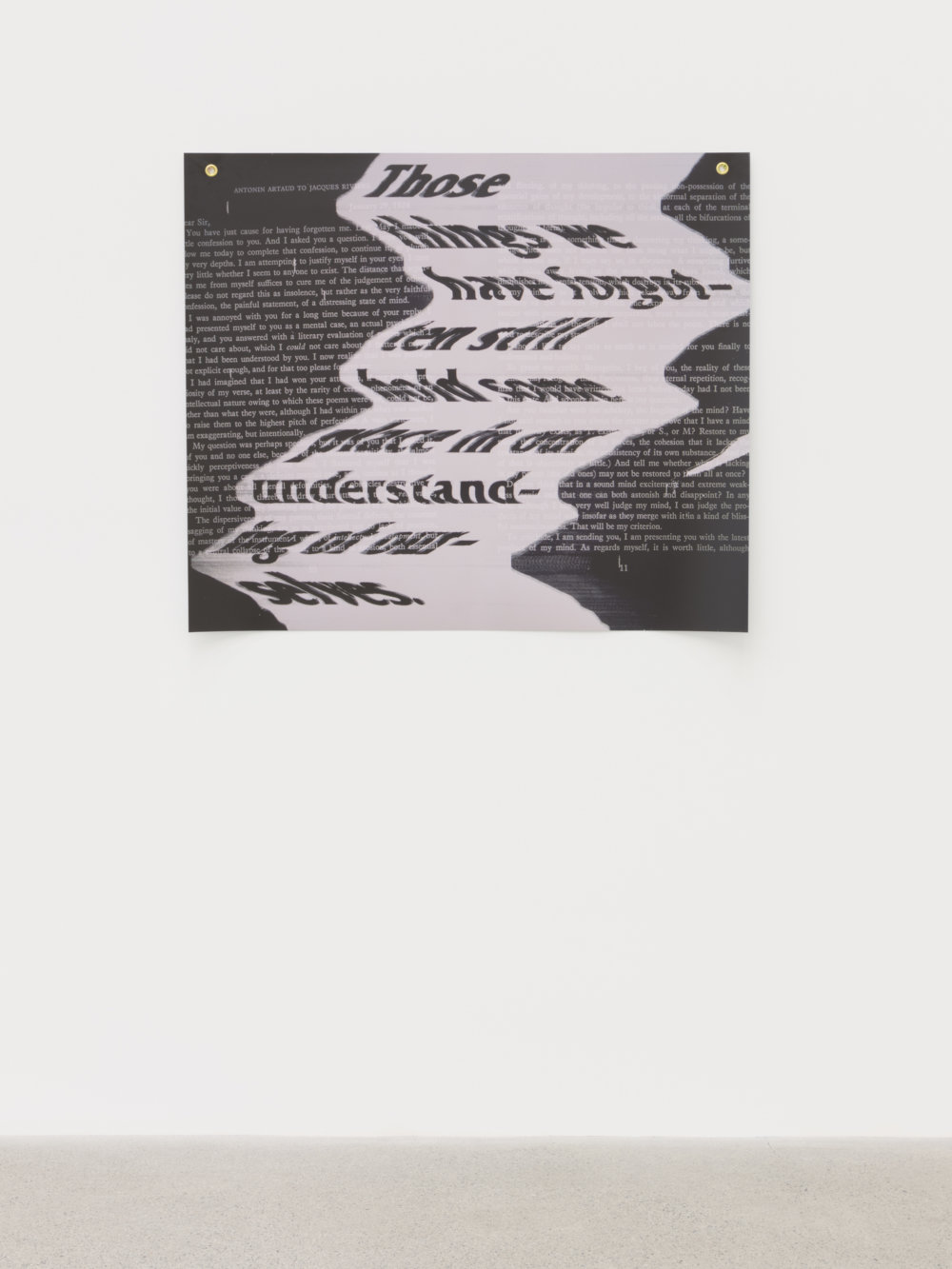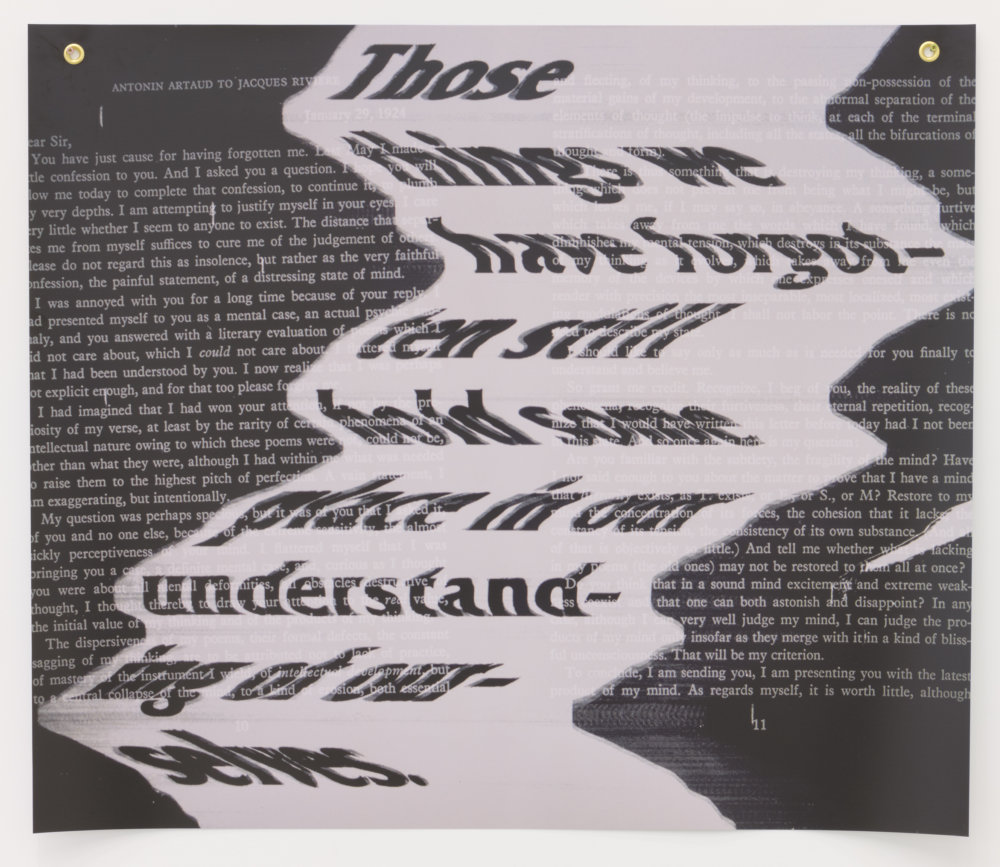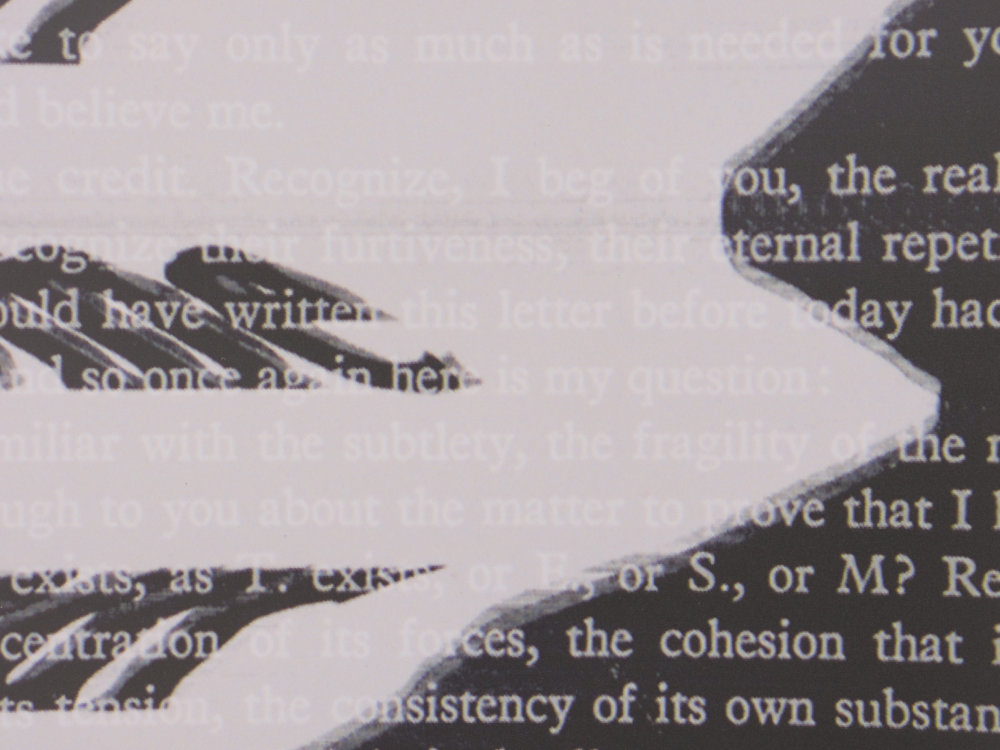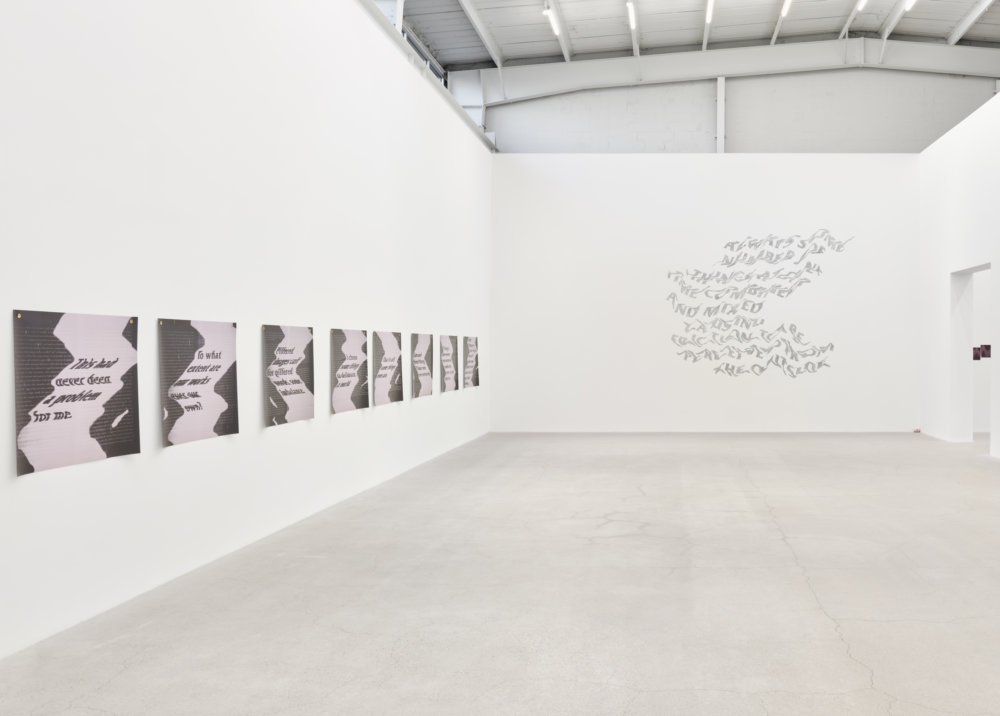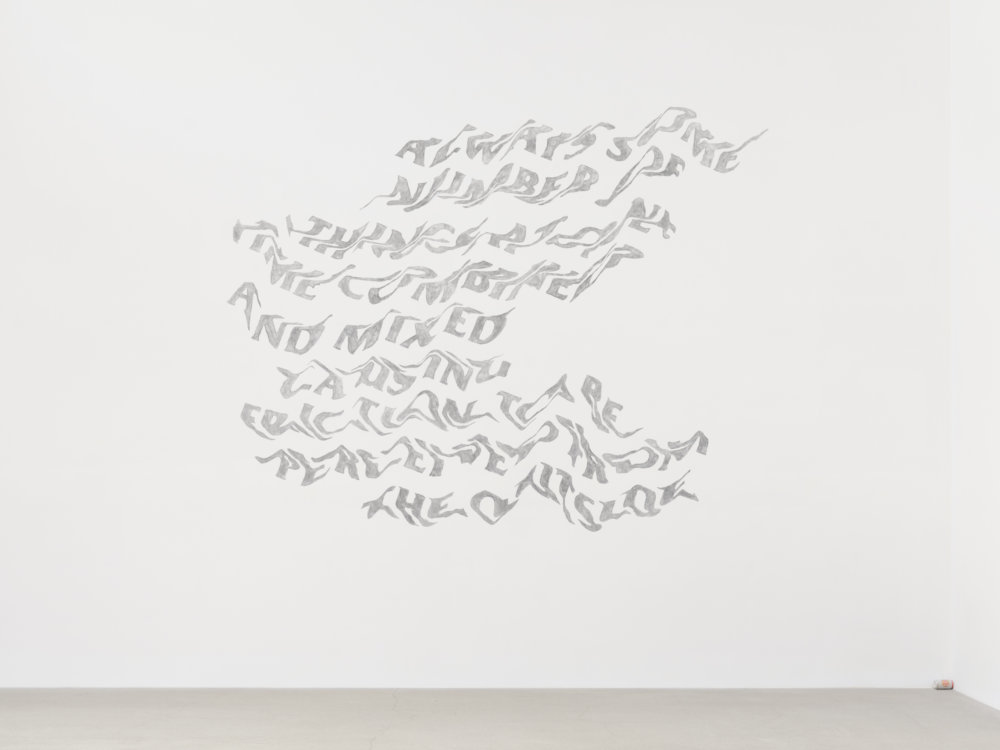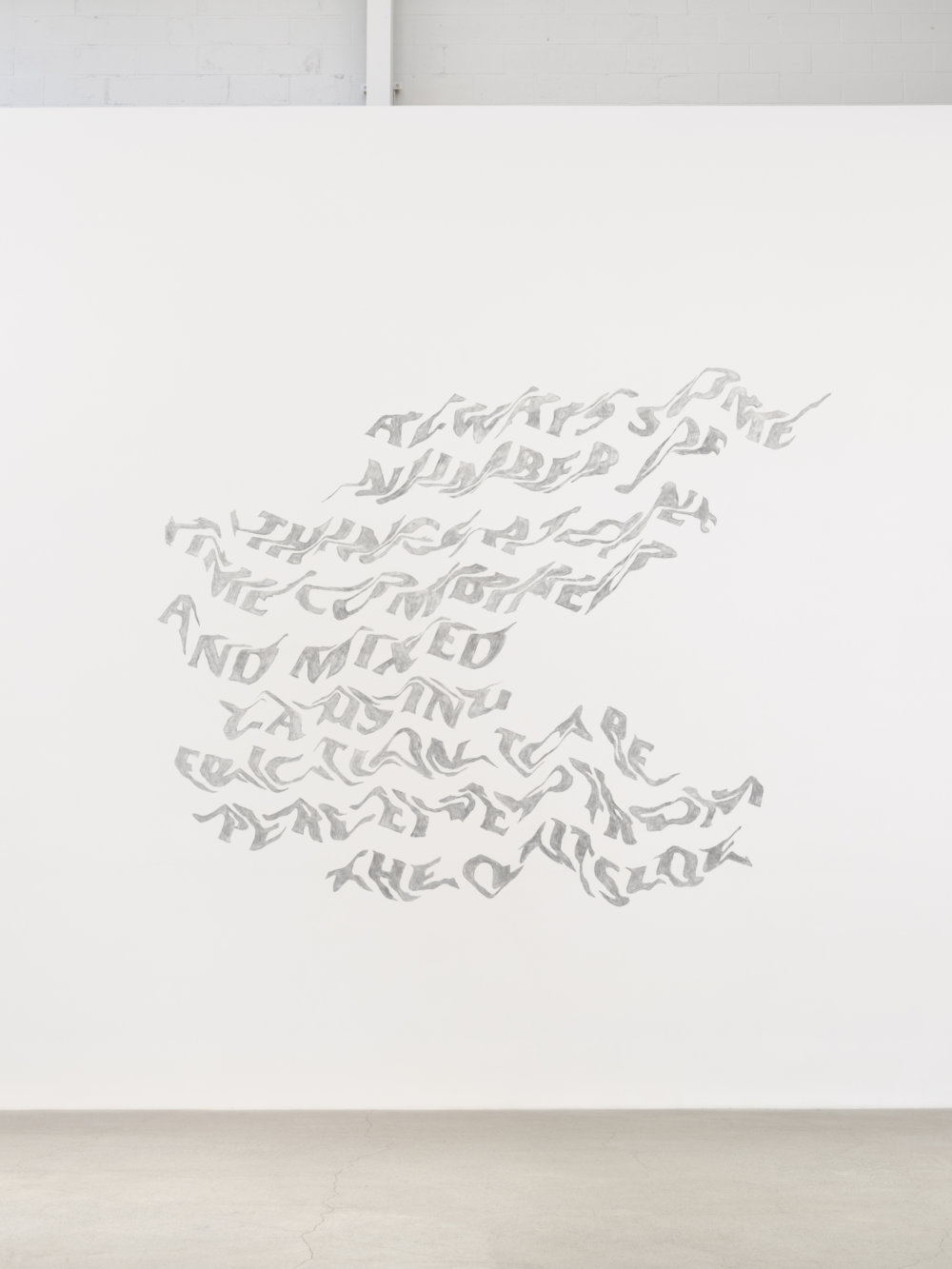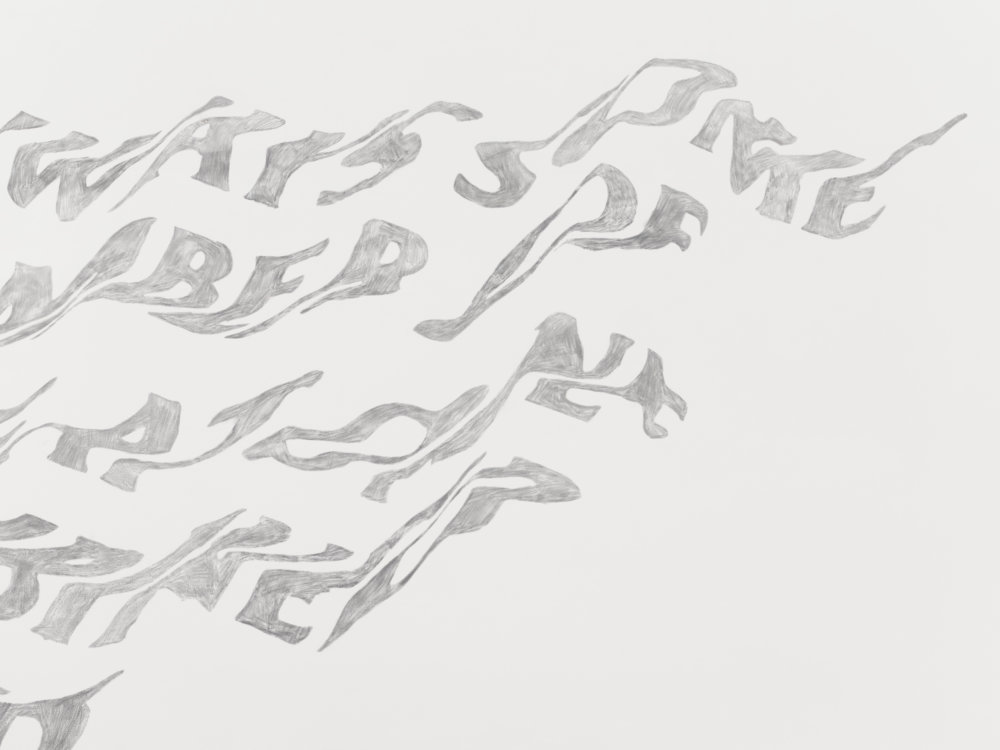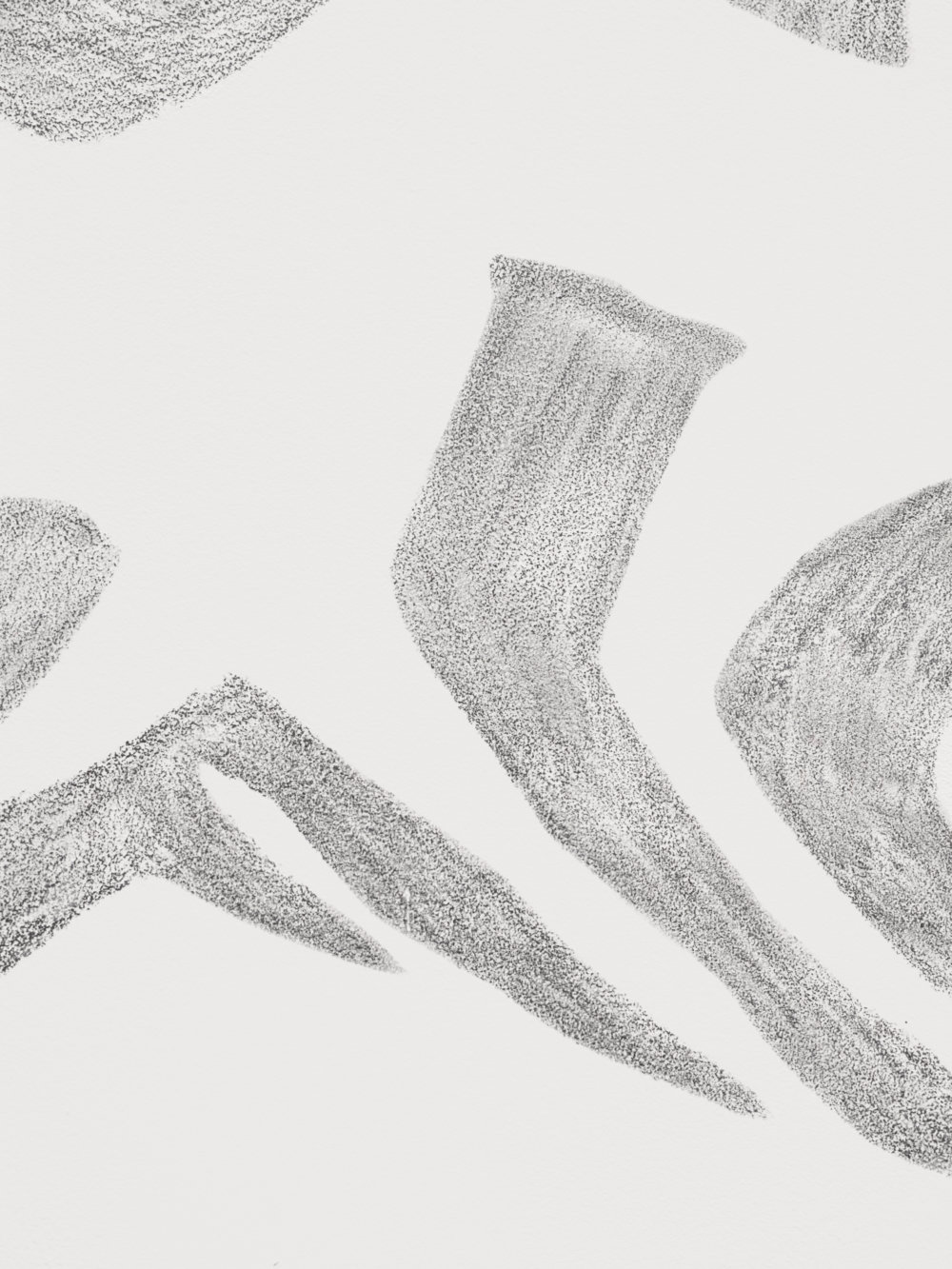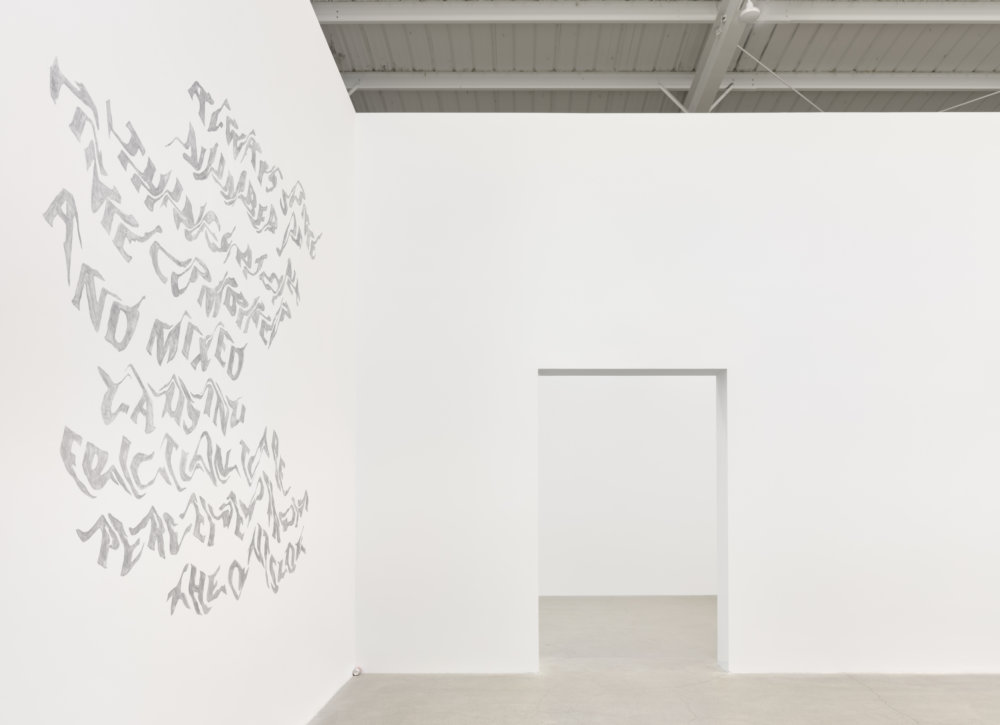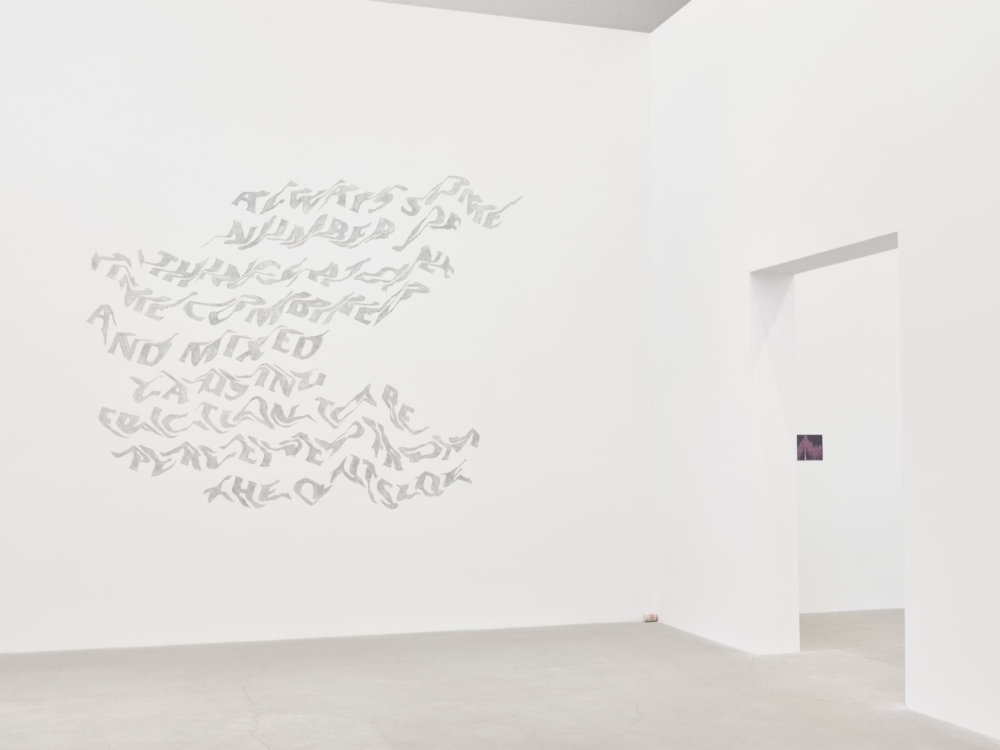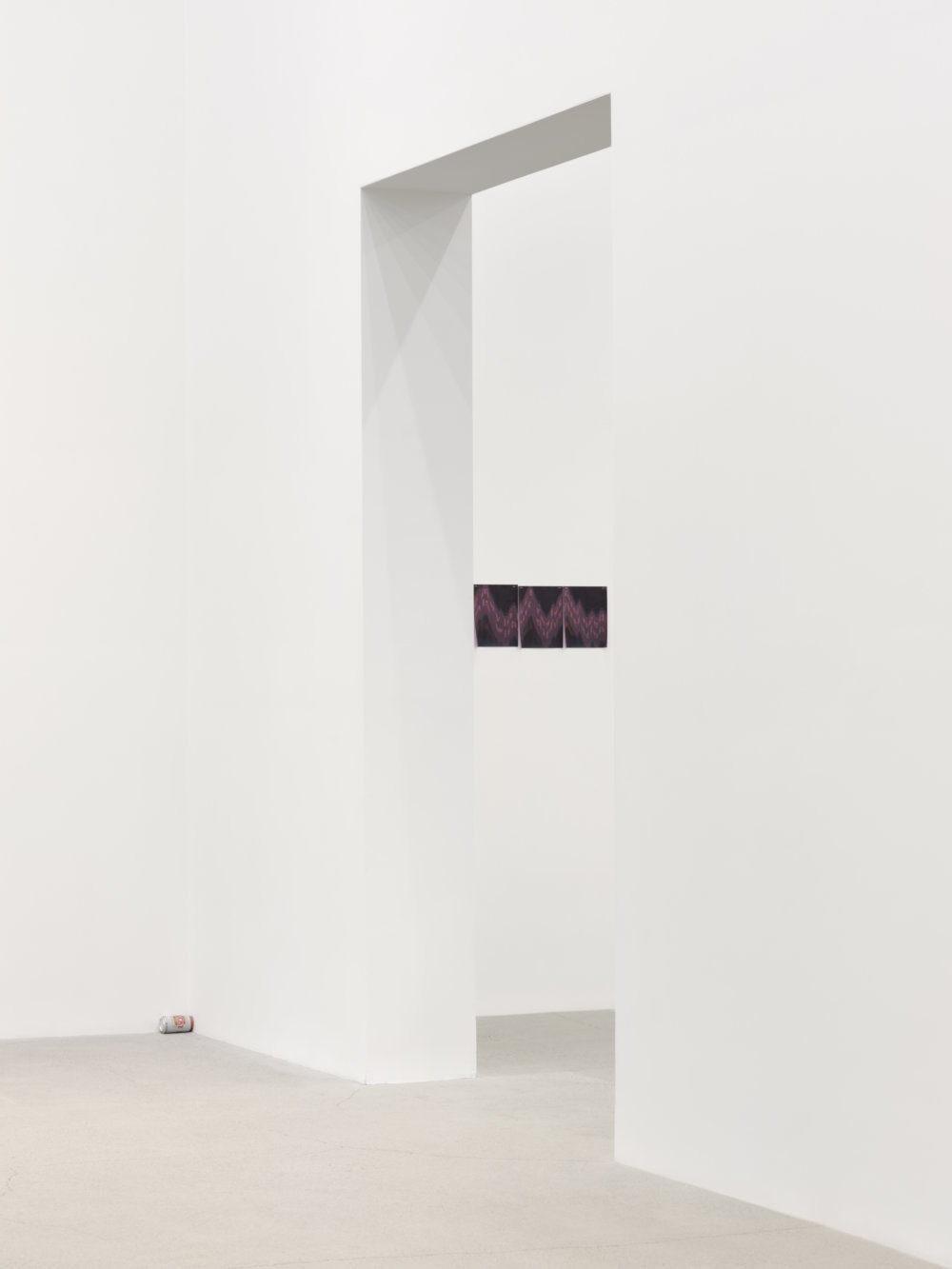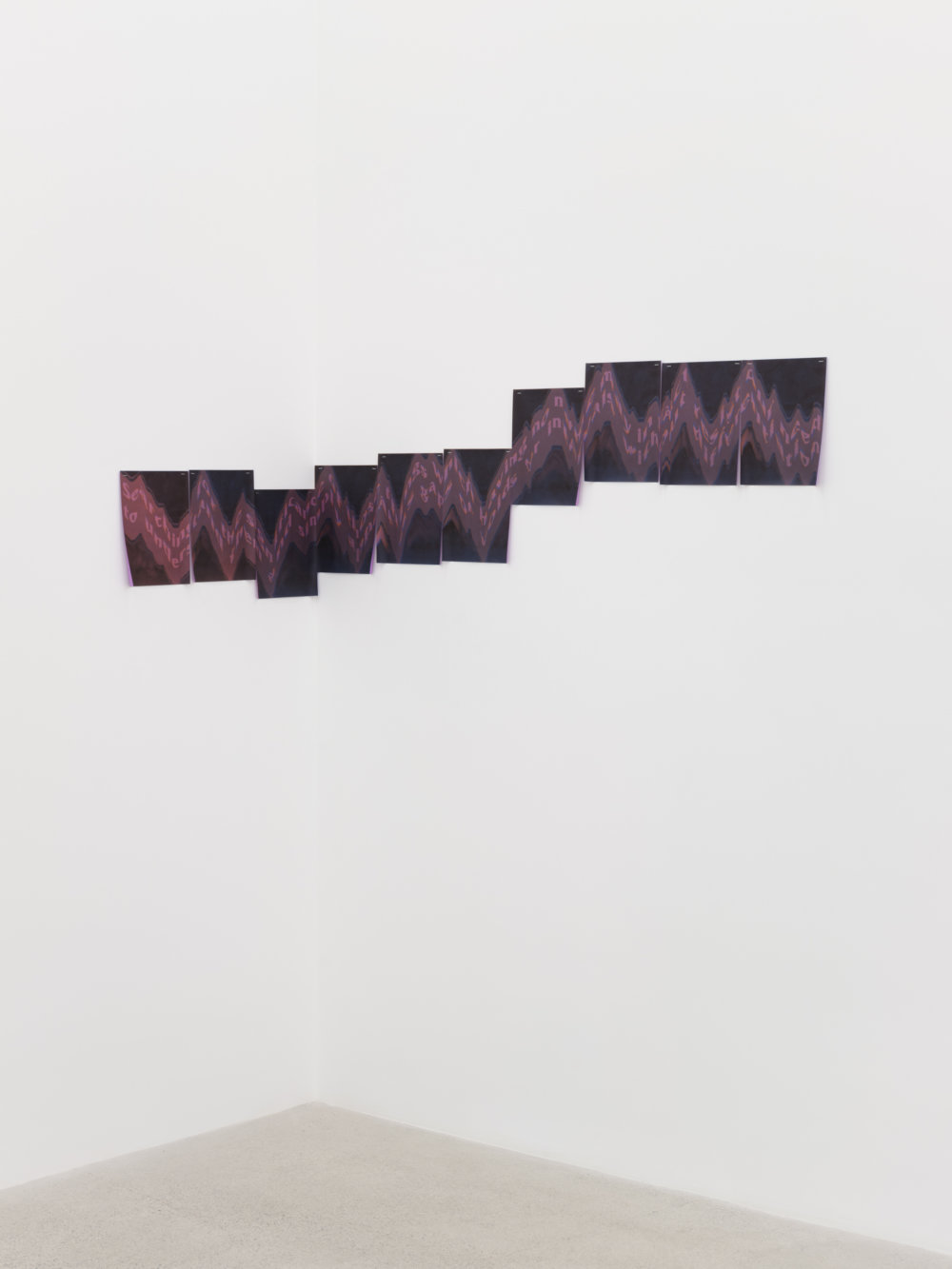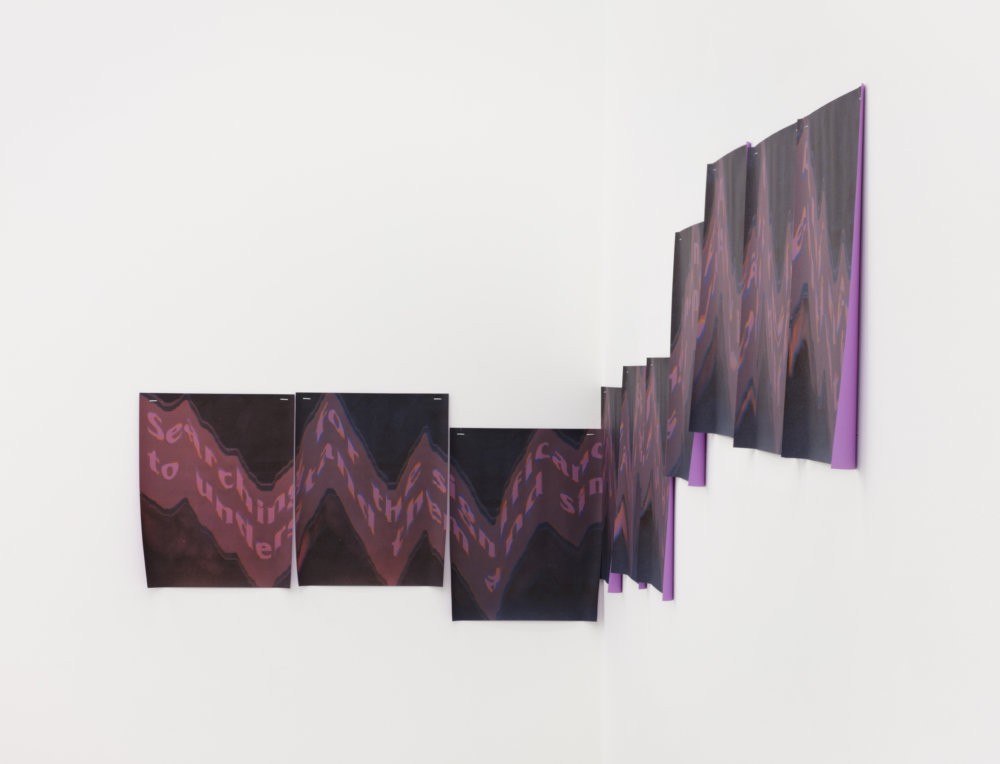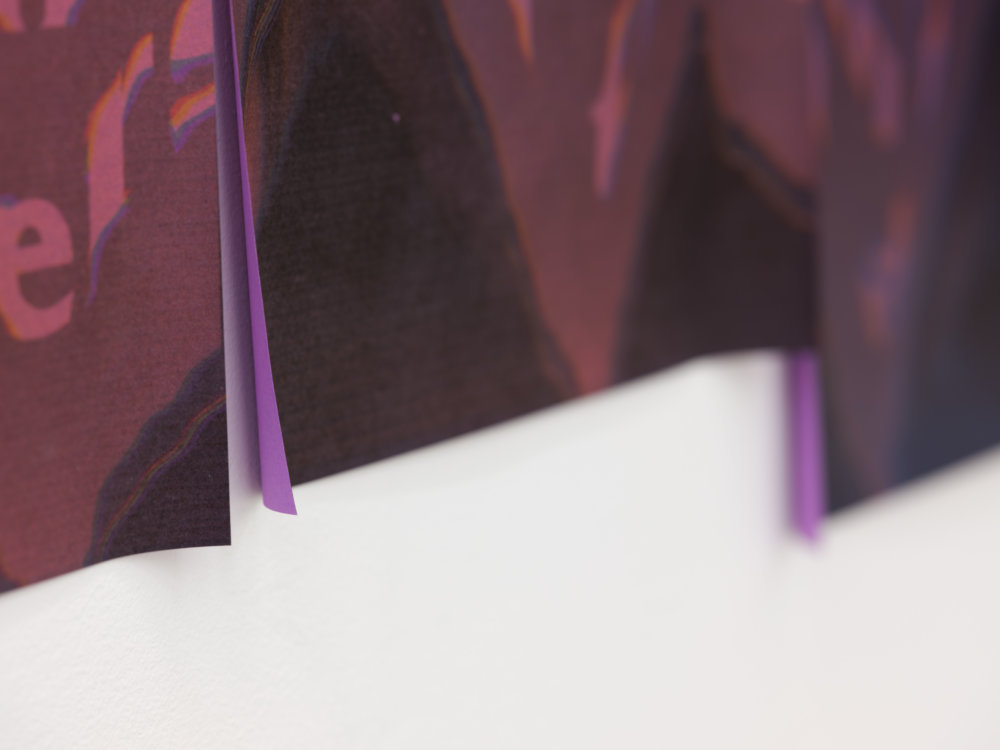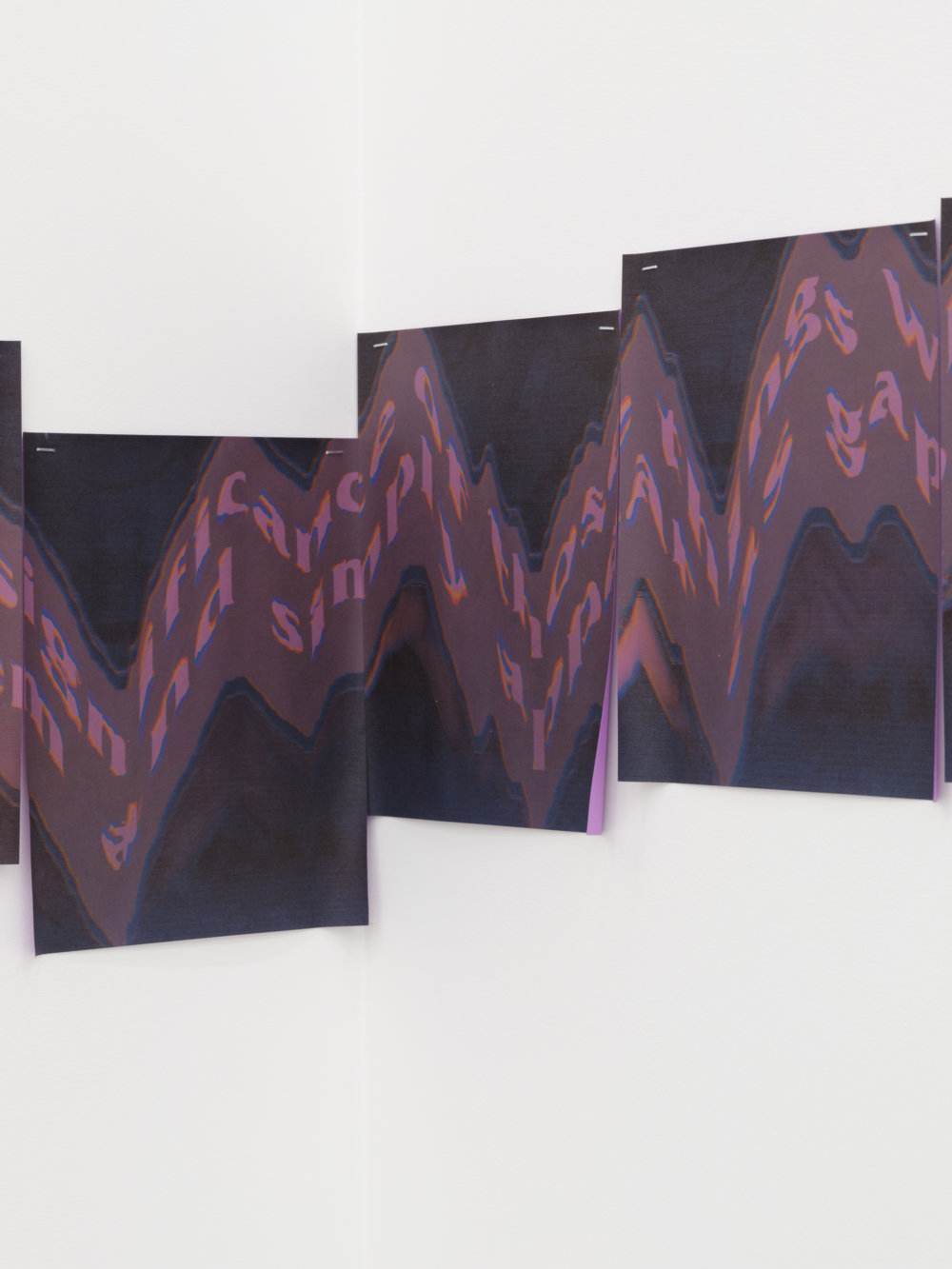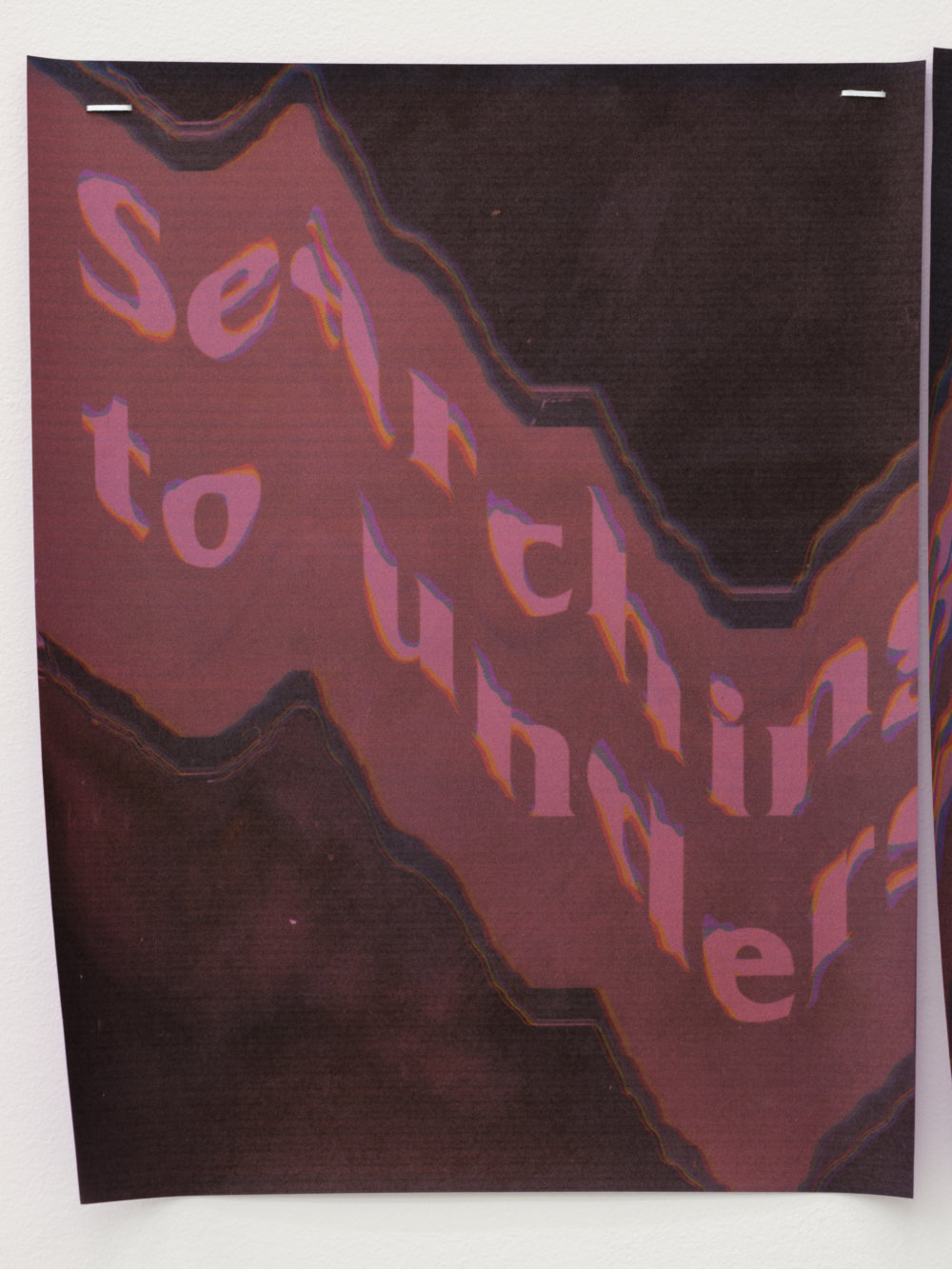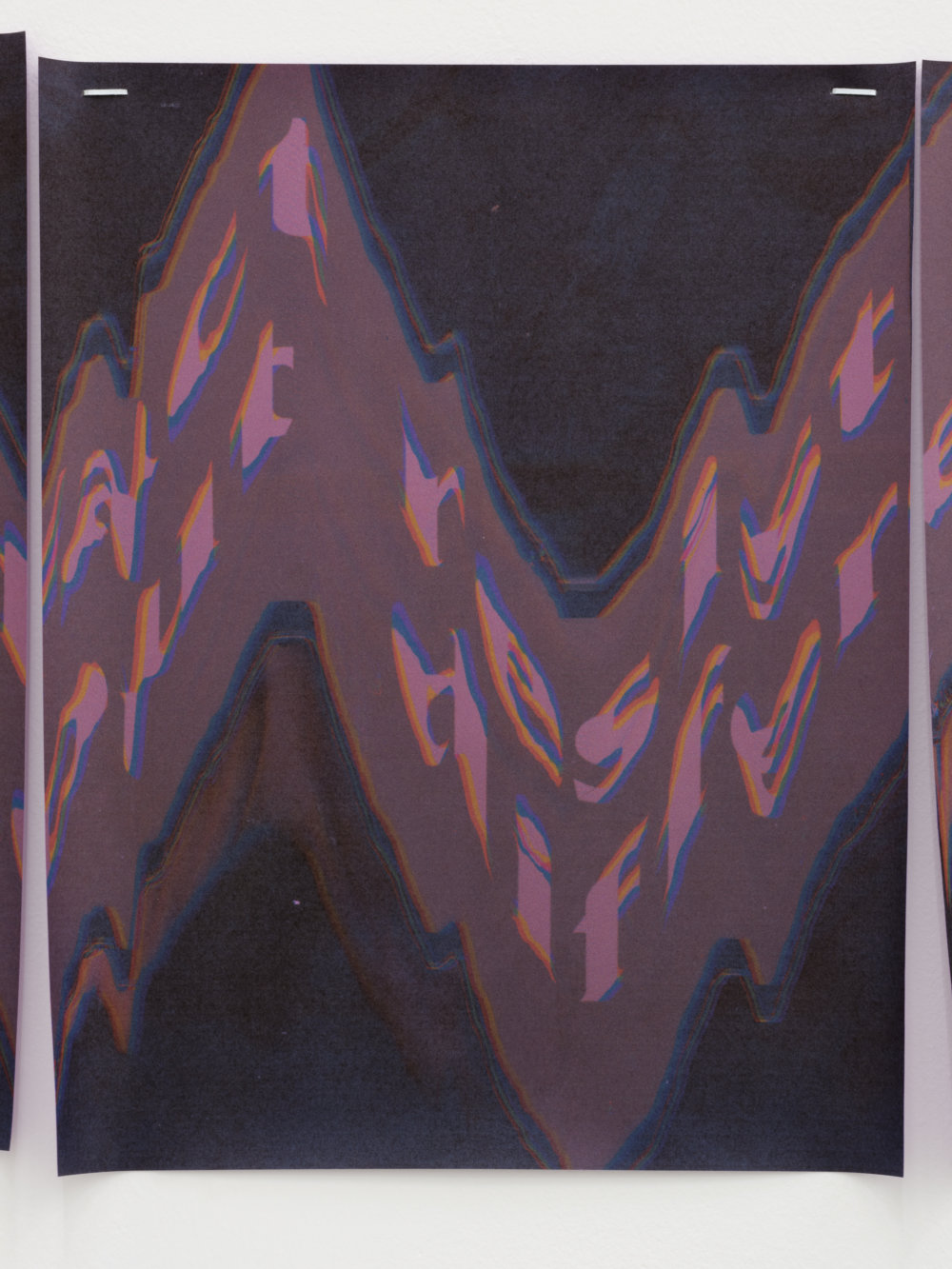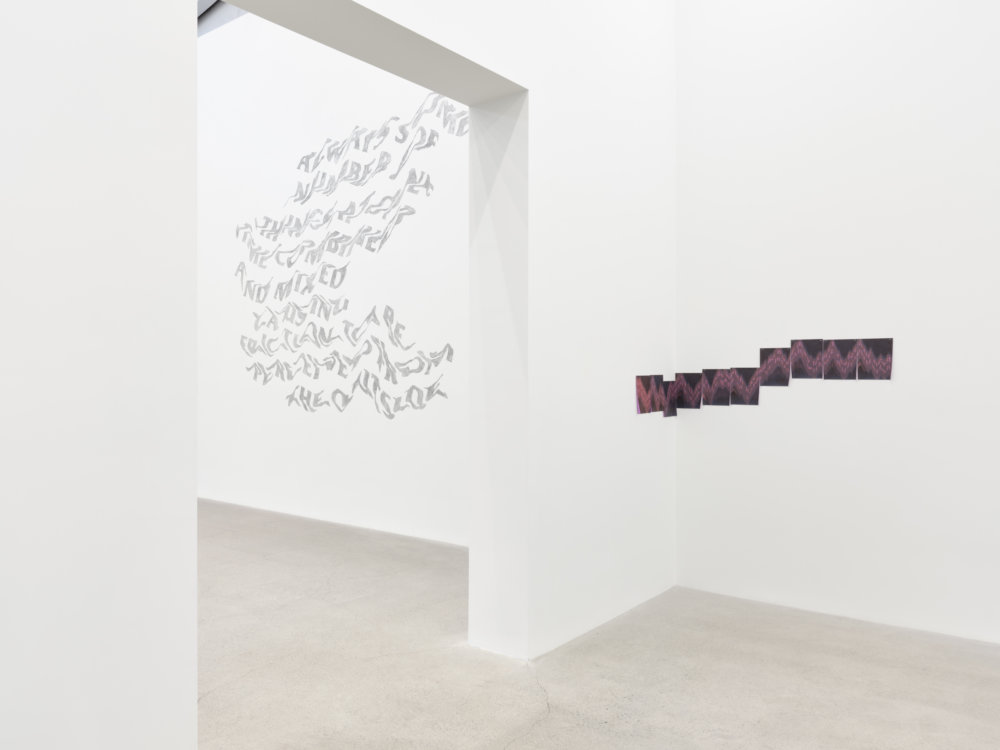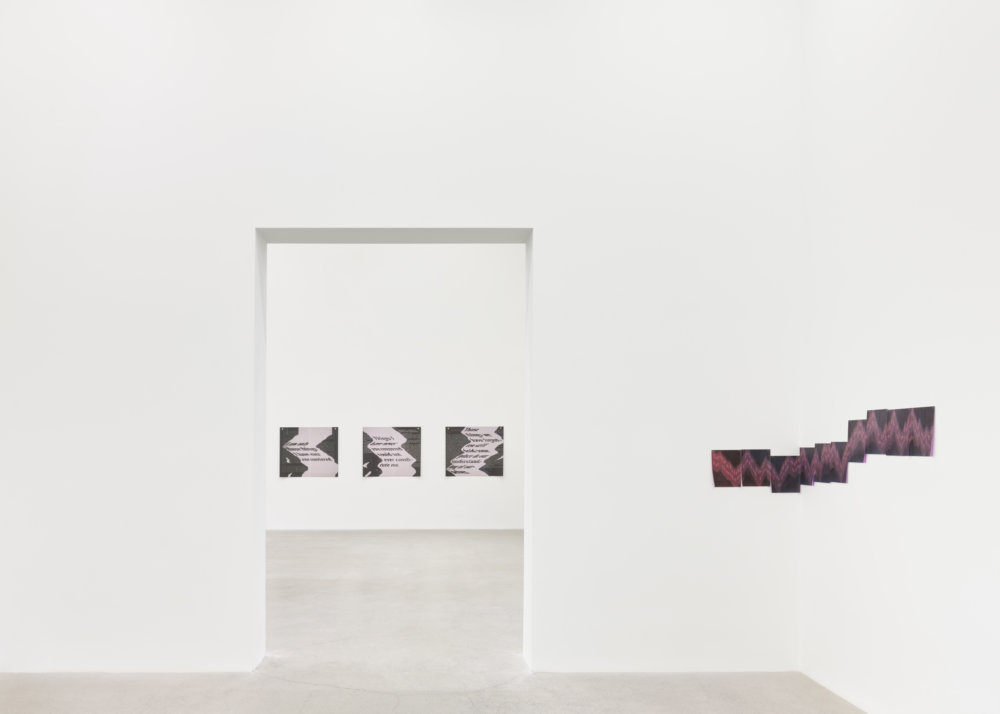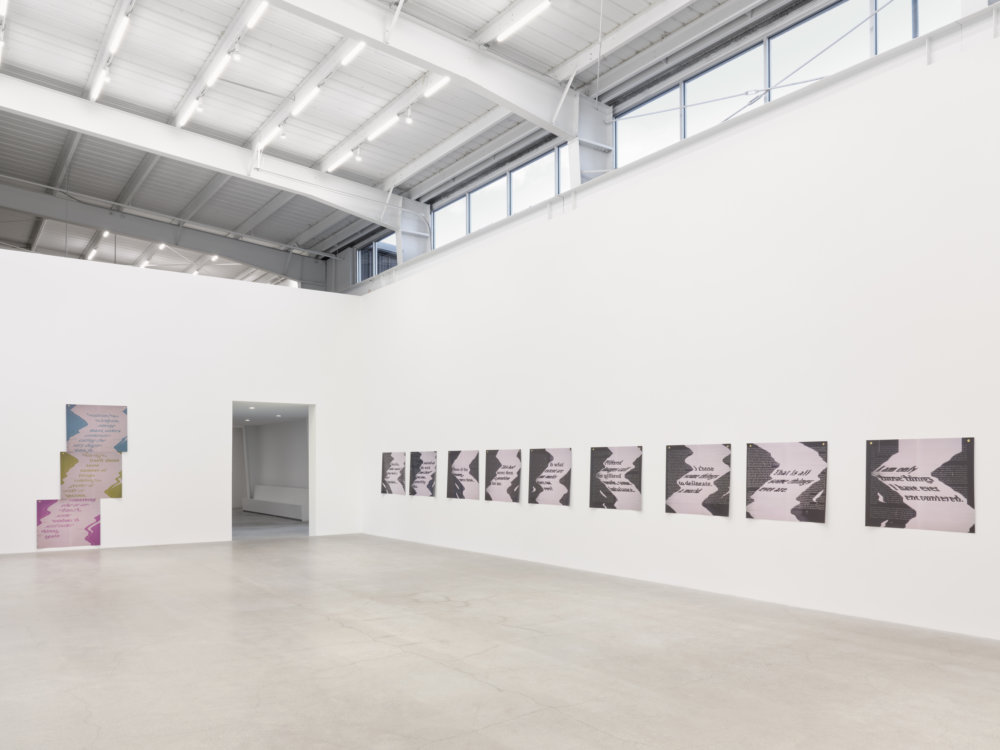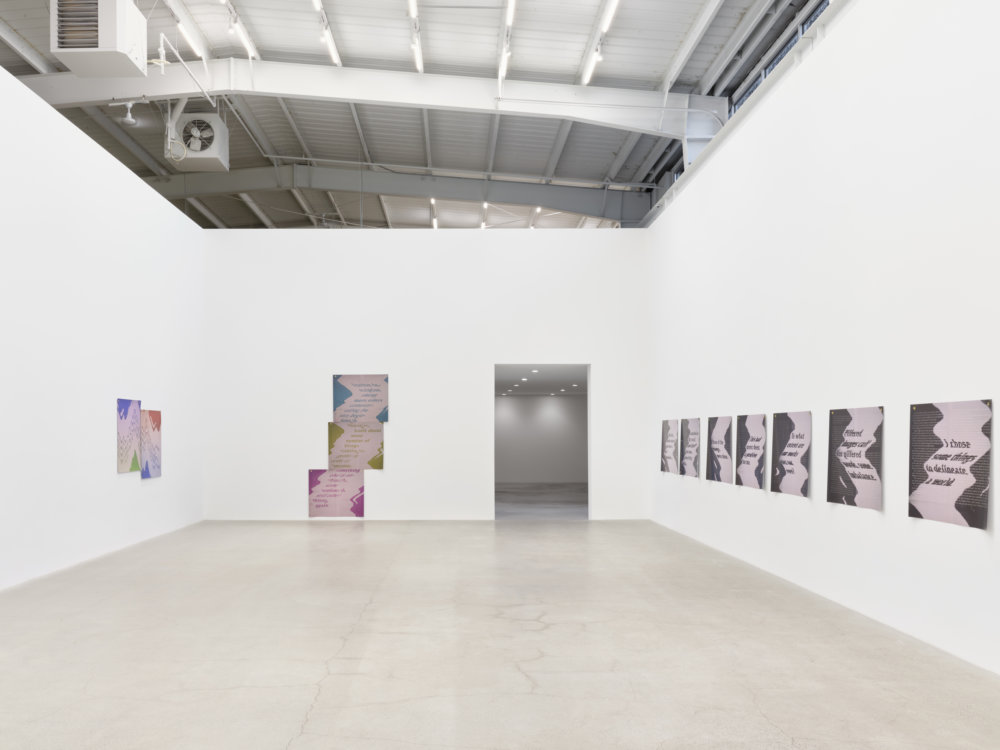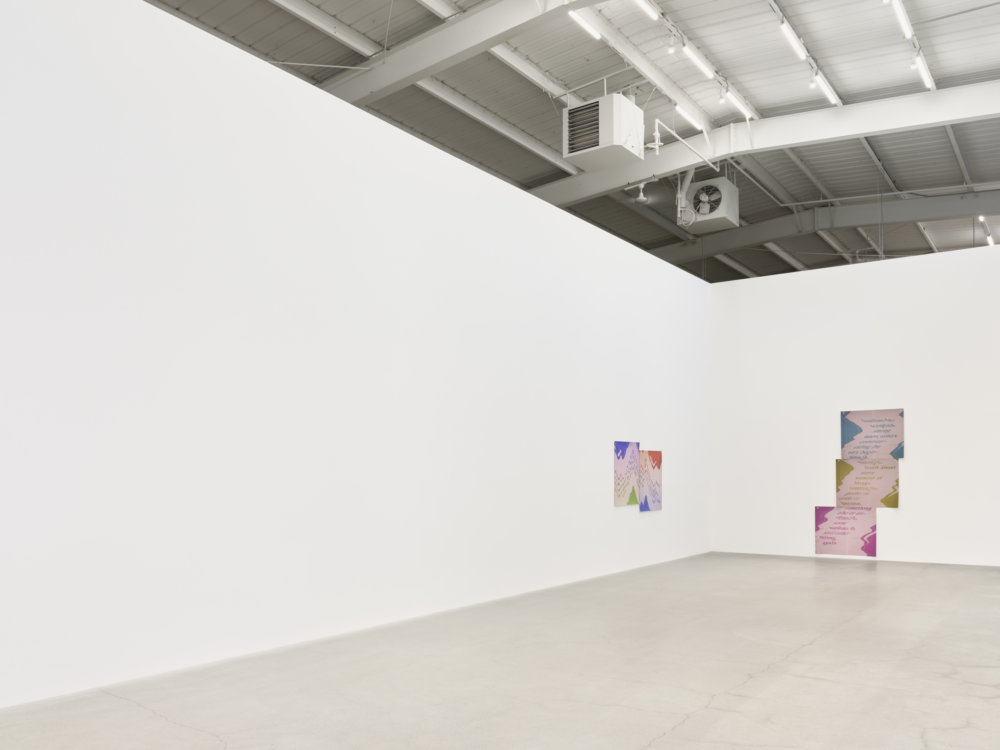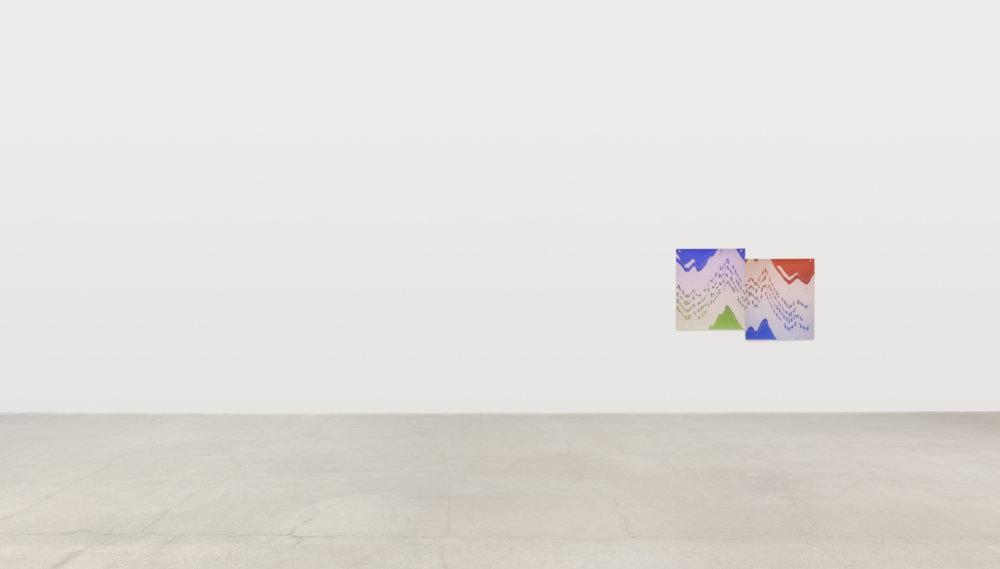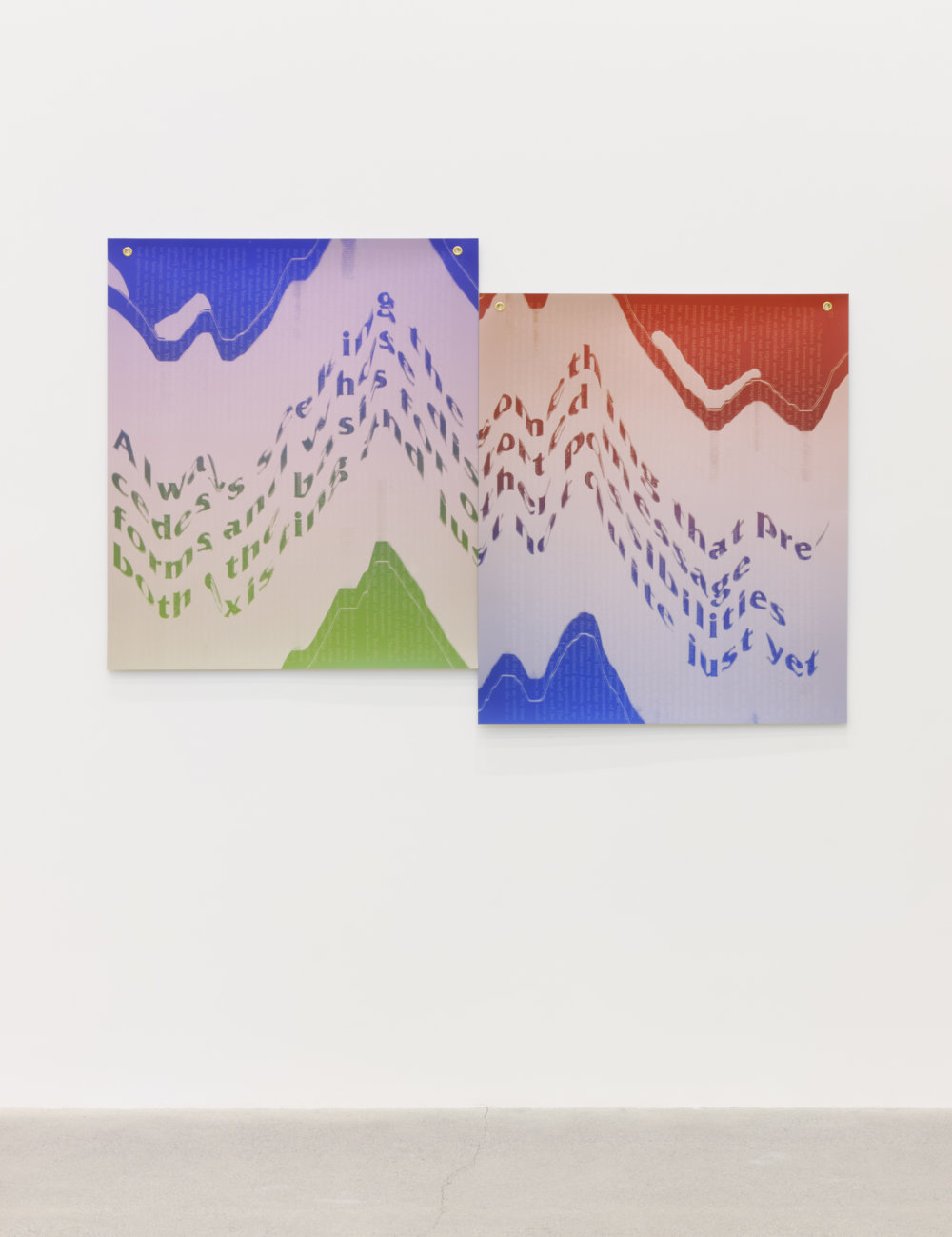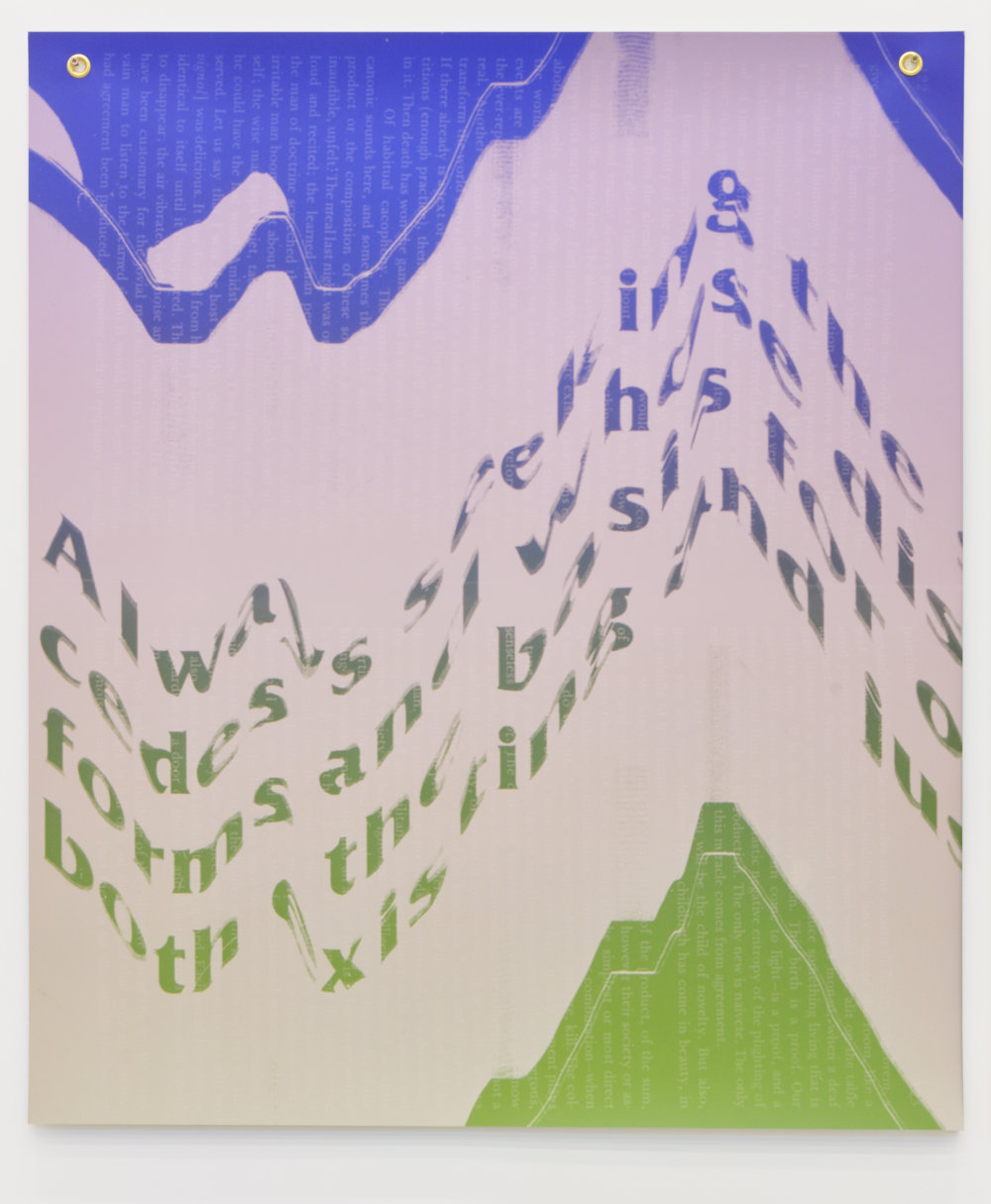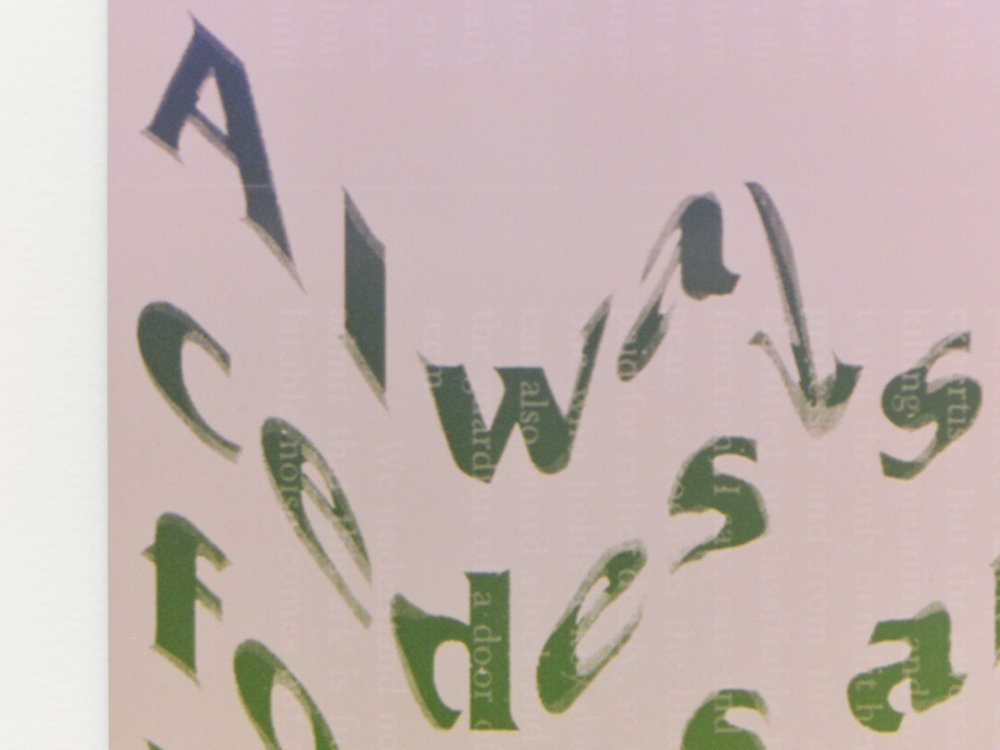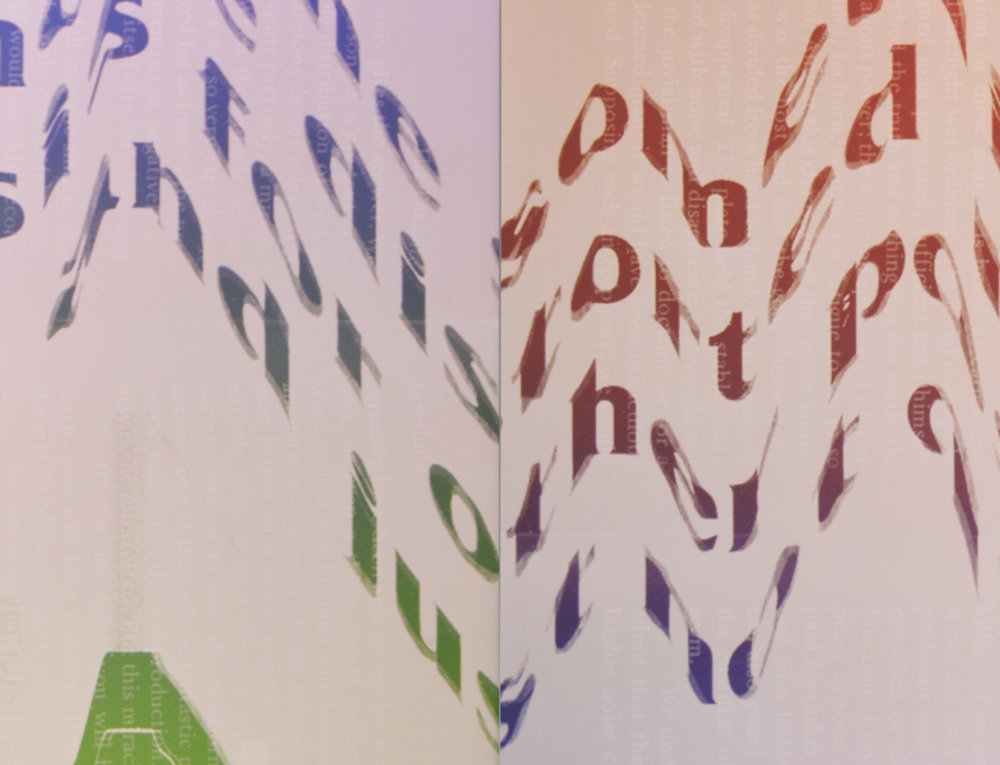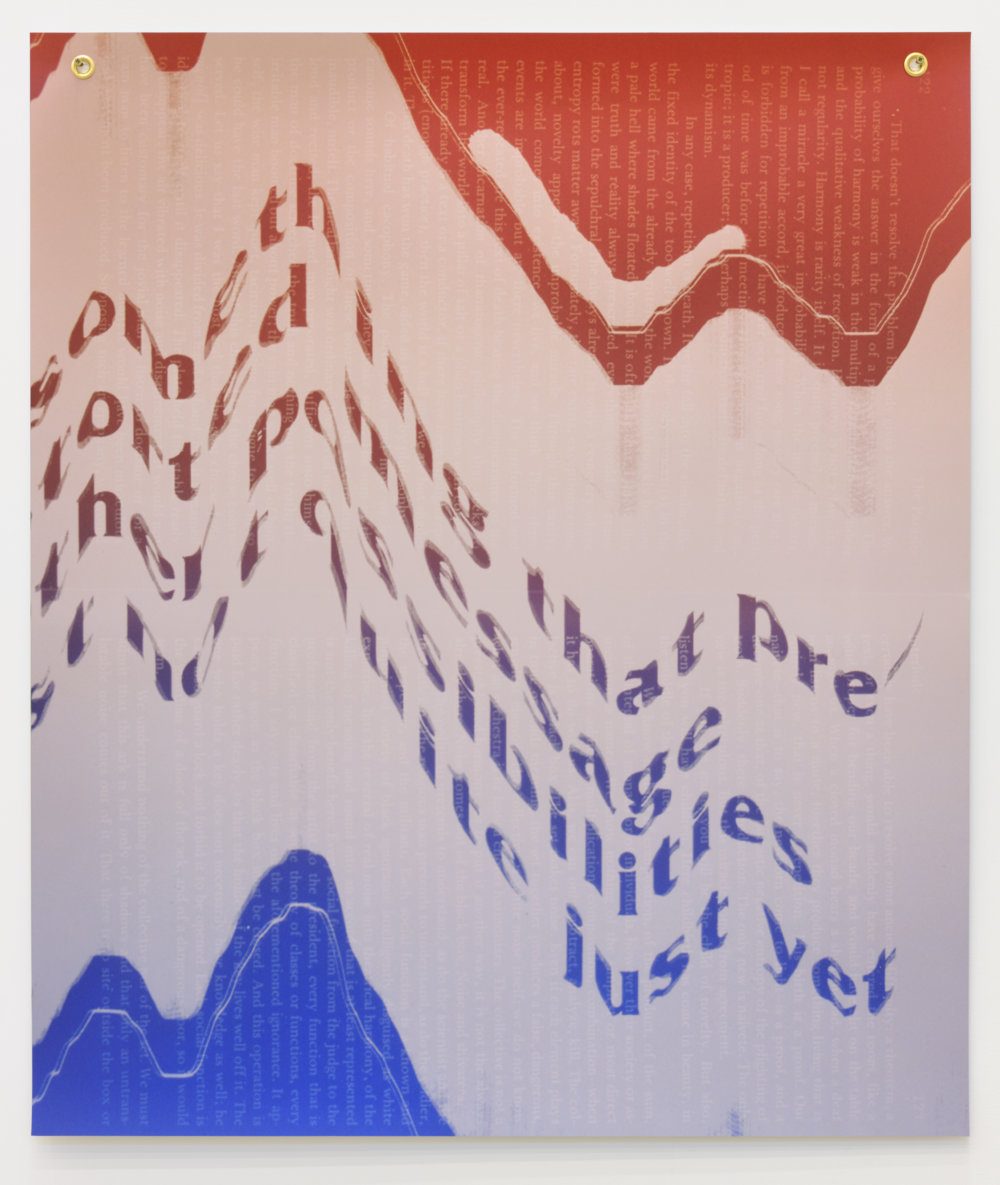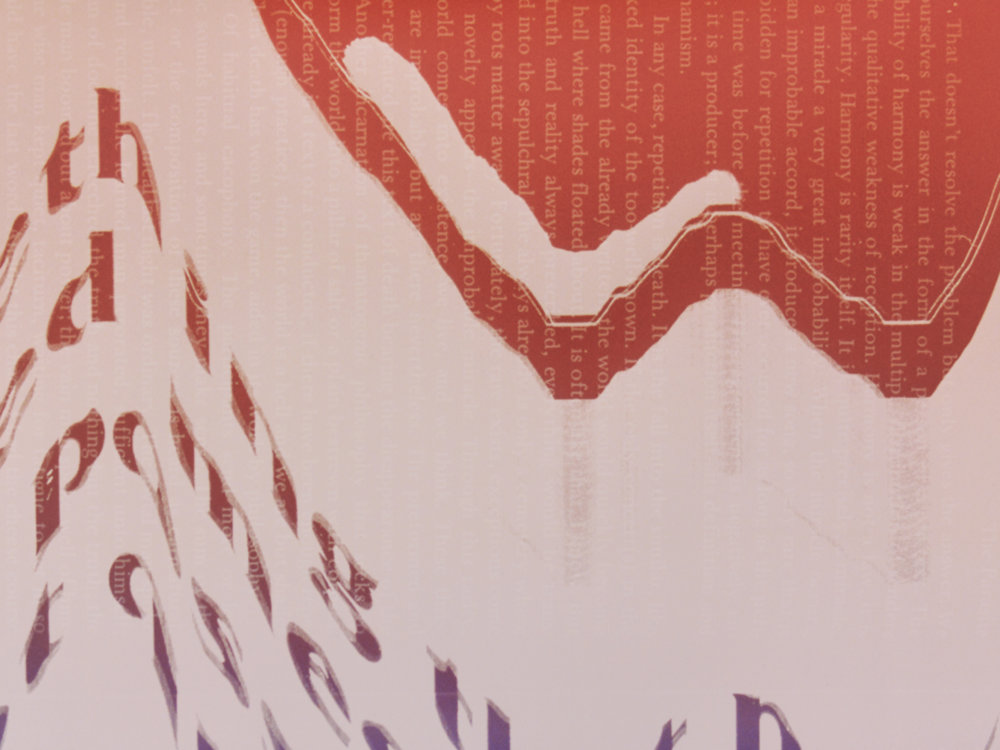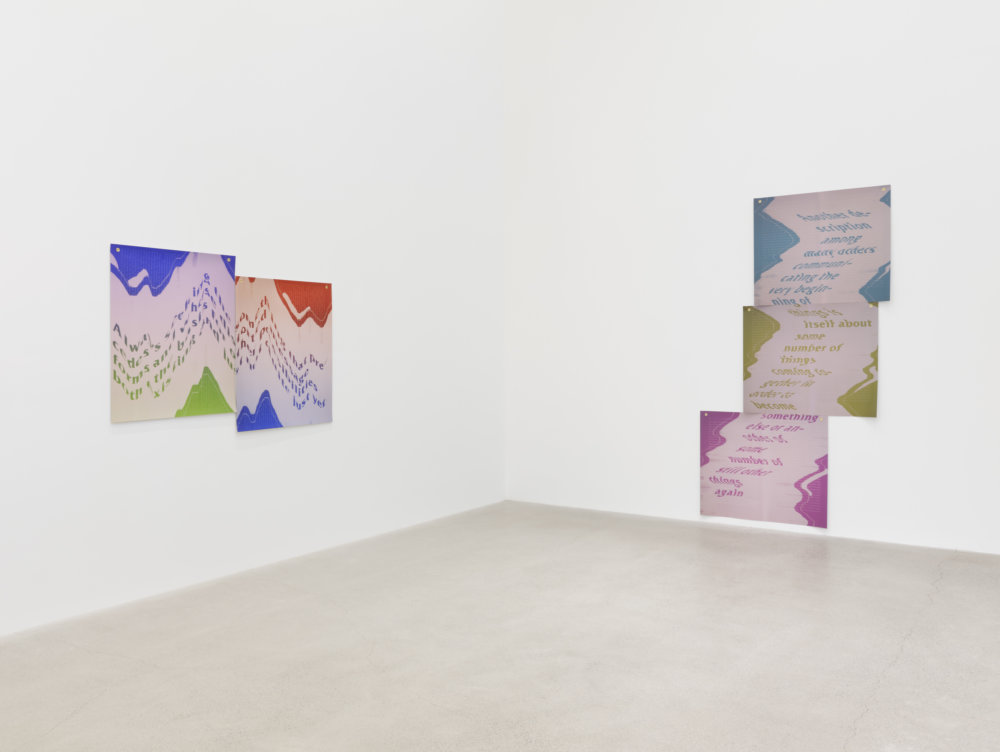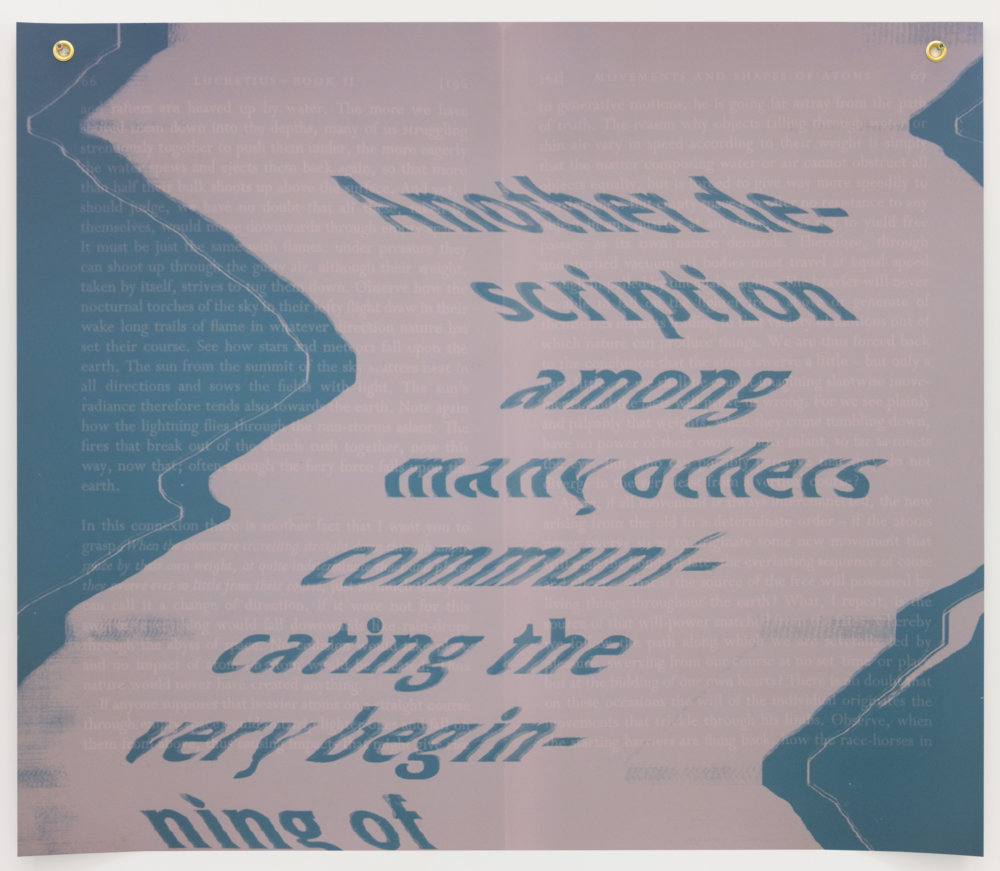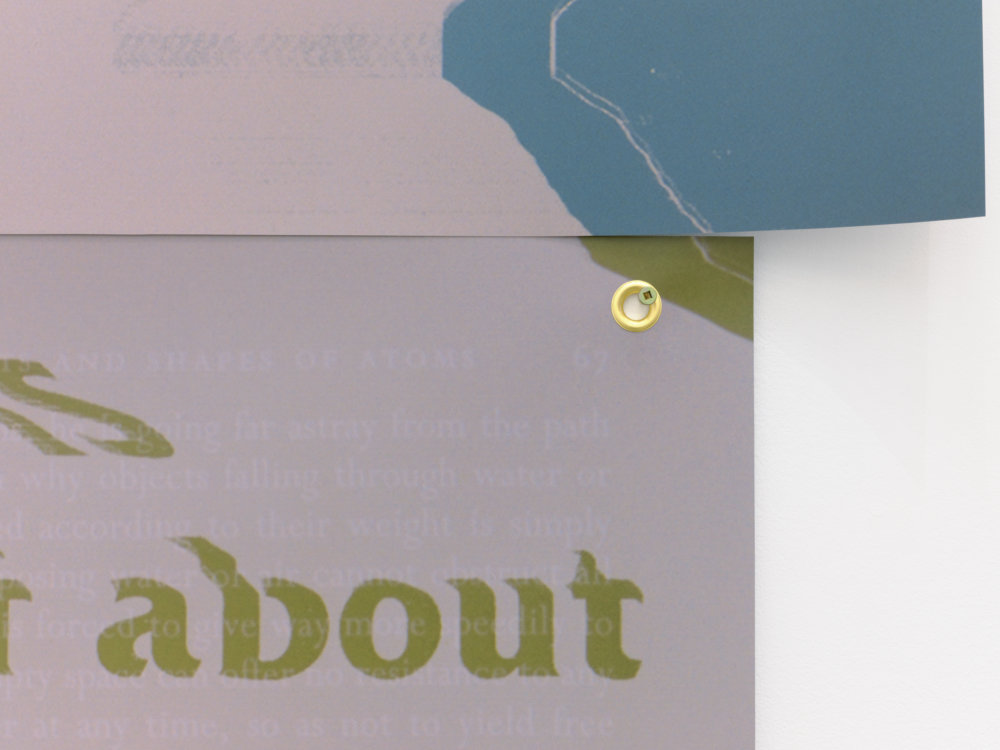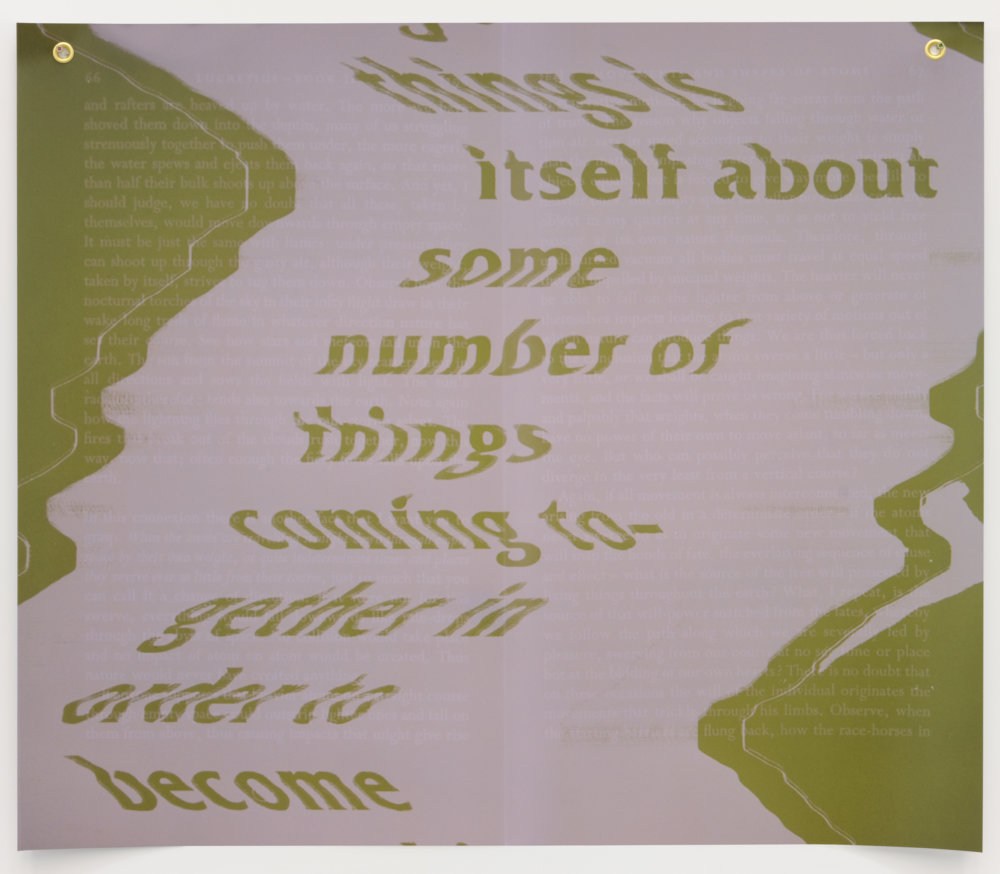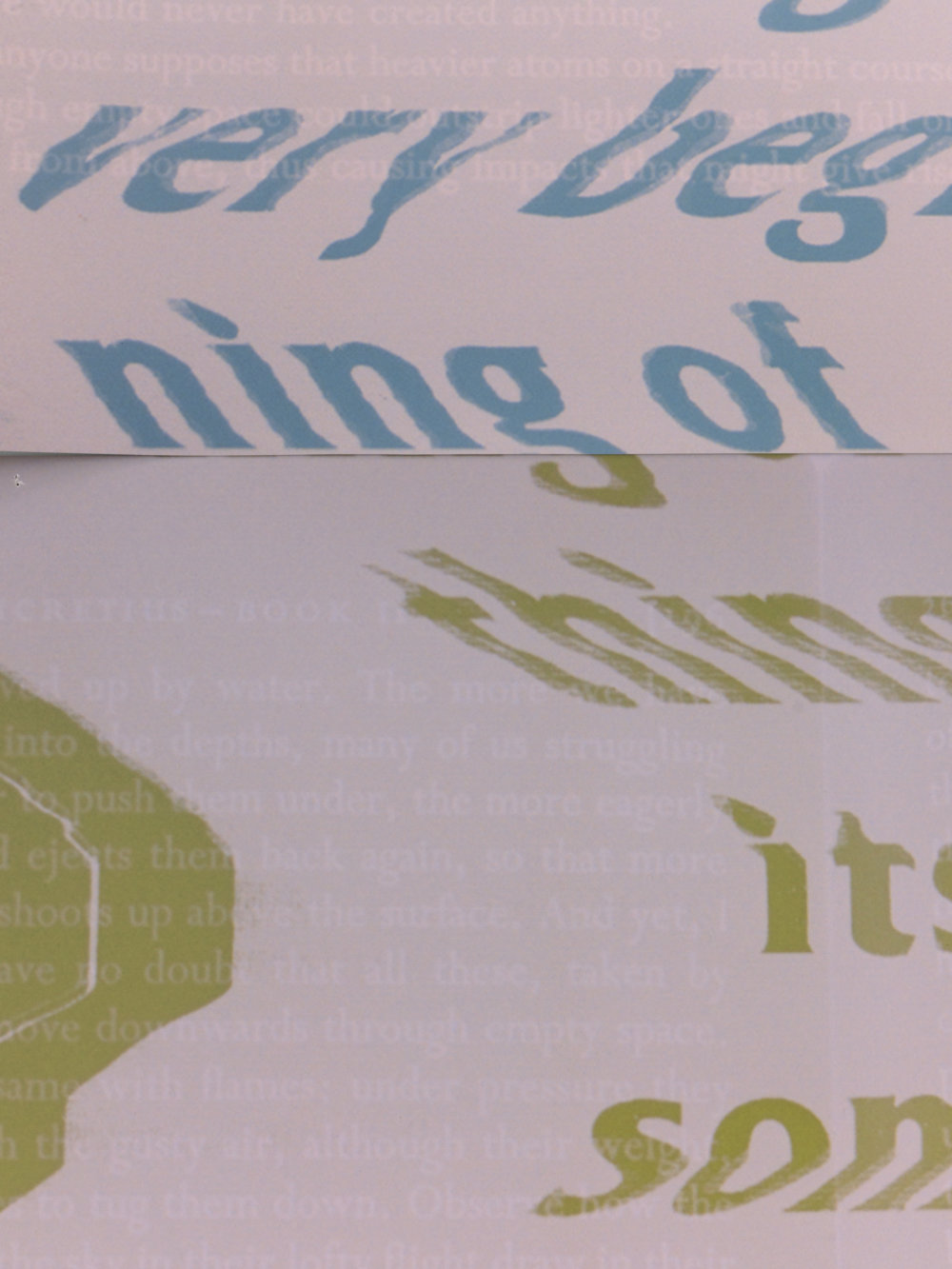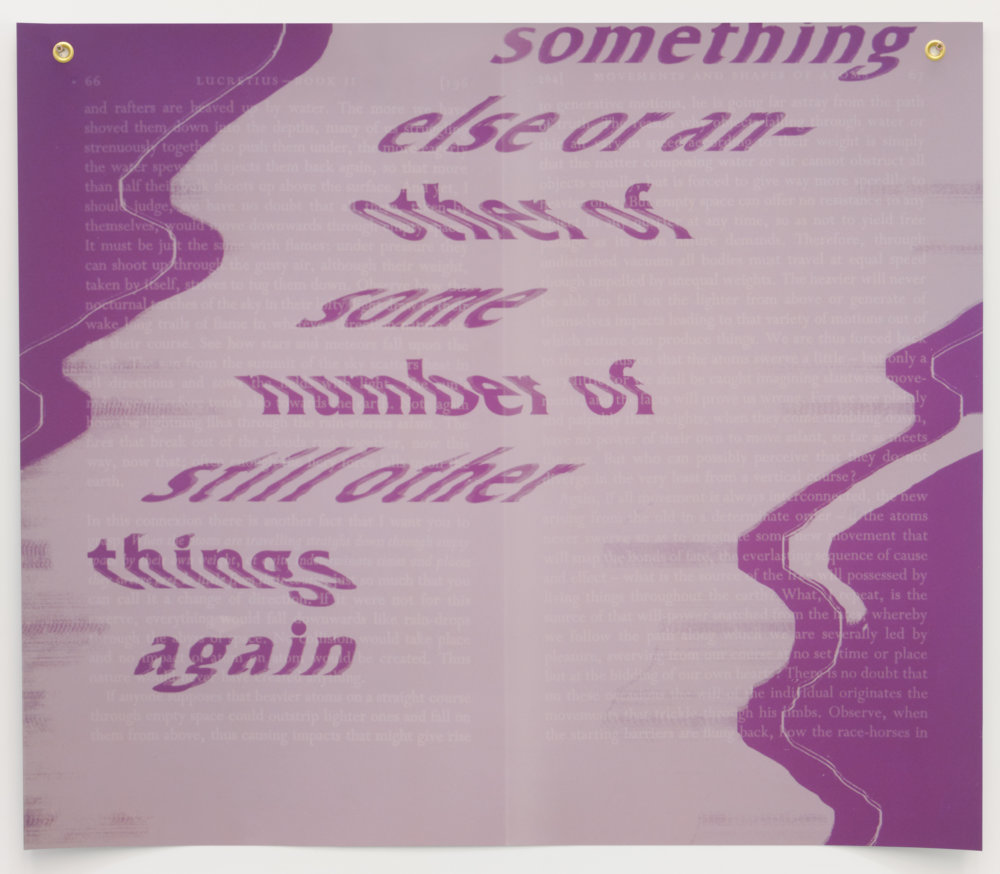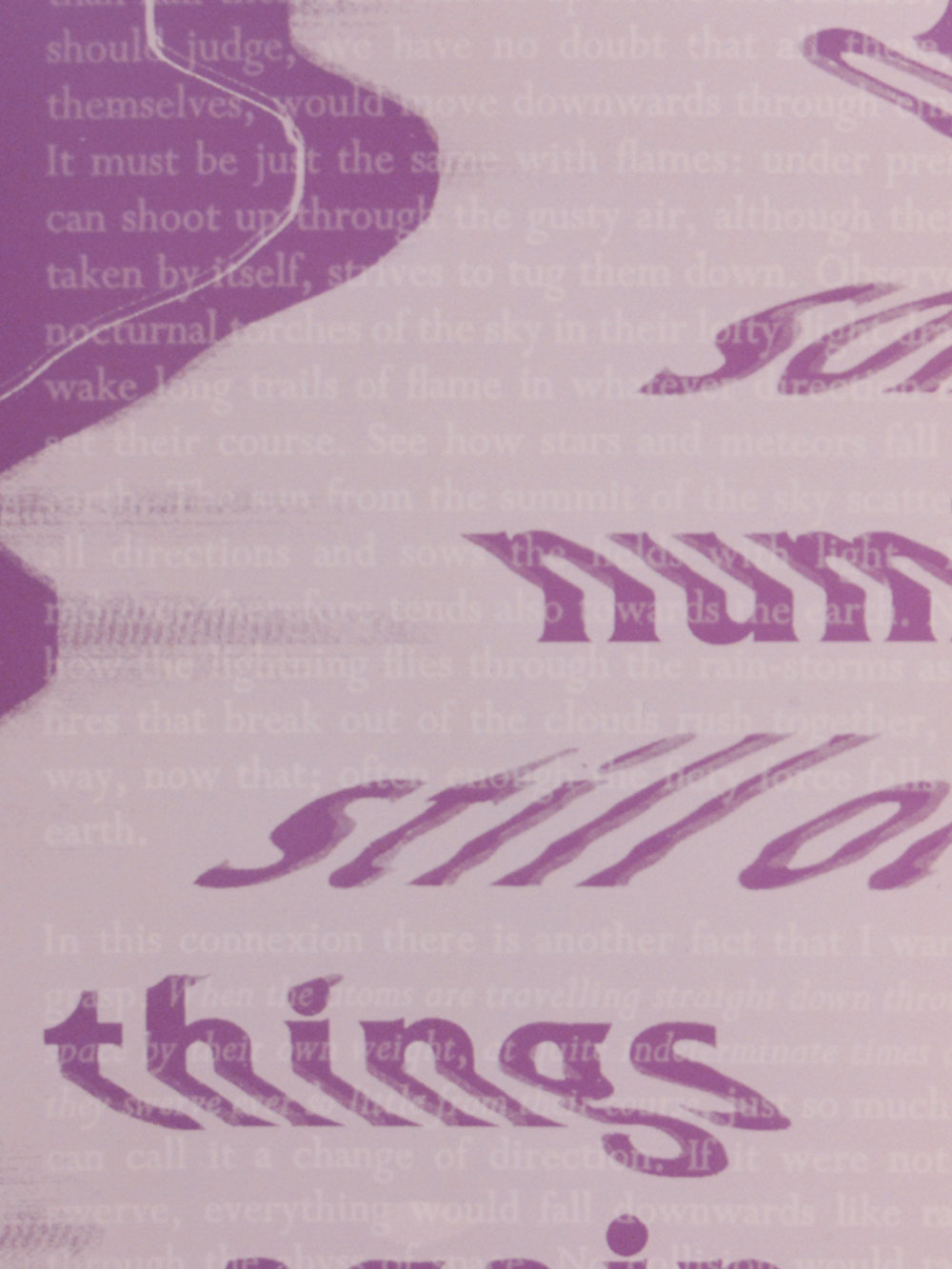Raymond Boisjoly
🕸Some Number of Things🕸
November 6–December 18, 2021
How can a beer can be academically cited? Raymond Boisjoly’s most recent body of work posits strange inquiries and statements through multiple referential paths, forming an exhibition not of one continuous narrative but a narrative repeating iteratively. While constructed of similar but differentiated parts, the exhibition is an intentionally convoluted and weird sequence of language–distinct textual works on signmakers vinyl, digital paper prints, and a large-scale text drawn directly on the gallery wall with the aluminum surface of a beer can.
Throughout his practice, Boisjoly employs language, photography, screens, scanners, and inkjet printers to capture technological processes interwoven with subject matter centered on cultural propriety, indigeneity, humour, and poetic-prophetic texts of mysterious origins. His use of standard commercial printing methods is a strategy of “least resistance” for reproducing text beyond the screen or printed page. Through these methods, he distances the work from the idea of a permanent, objective art medium, suggesting cultural encounter as a process, rather than fixed in form, material and meaning. Using a container for alcohol as a drawing implement for a barely legible English text is not a neutral gesture.
In large vinyl photographic prints, he combines images of his own text together with images of book pages through a process of multiple exposure analog photography of a computer screen. Here, the altered artist’s language is foregrounded against a partially obscured textual reference. While his work roots itself in a continued reference to the linguistic turn in conceptual art history, he also he expands upon the practice of non-identical replication in relation to photography–a thread throughout his work, as is text as image. Central to this is the contemplation of mediation as a form of displacement, analogous to the historical and ongoing displacement of peoples and cultures.
Concurrently, his interest in the concept of blurring where production begins and ends, Boisjoly creates a sort of citational cobweb in the exhibition. He riffs off the idea of catching information for consumption and getting caught inside it oneself, a kind of academic and artistic conundrum. The citations, legible in an obtuse way, constitute in part the artist’s thinking about both production and the work. The works also simultaneously draw on the citation and on the impulse or motivation of the artist. For Boisjoly, the production of the work does not begin with the artist. Instead, the work adopts texts from authors who act as interlocutors. While not immediately present, these citations become the material from which the artist casts his idea, not an independent thought but one in a dialogue.
Raymond Boisjoly’s solo exhibitions include MIT List Visual Arts Center, Cambridge (2022); Catriona Jeffries, Vancouver (2021); The Polygon Gallery, North Vancouver (2020); VOX, Montreal (2016); Carleton University (2015); Platform Centre for Photographic + Digital Arts, Winnipeg (2014); Simon Fraser University Gallery, Vancouver (2013). He has been featured internationally in exhibitions including at the Johnson Museum of Art, Cornell University (2021); Honolulu Biennial (2020); Daegu Photo Biennale, South Korea (2018); Henry Art Gallery, Seattle (2017); SITElines, Santa Fe (2014); and in exhibitions at Triangle France, Marseille; Camera Austria, Vienna (2014) as well as L’avenir (looking forward), Biennale de Montréal (2014); The Power Plant, Toronto (2012); and the Vancouver Art Gallery (2018, 2016 and 2012-14).
Boisjoly is Assistant Professor at Simon Fraser University. He received a BFA from Emily Carr Institute of Art and Design (2006) and an MFA from the University of British Columbia (2008). He was a recipient of the VIVA Award (2016), presented by the Jack and Doris Shadbolt Foundation for the Visual Arts, Vancouver.
